Day #12 Visiting Vienna Austria Part #1 (Page Seventeen)
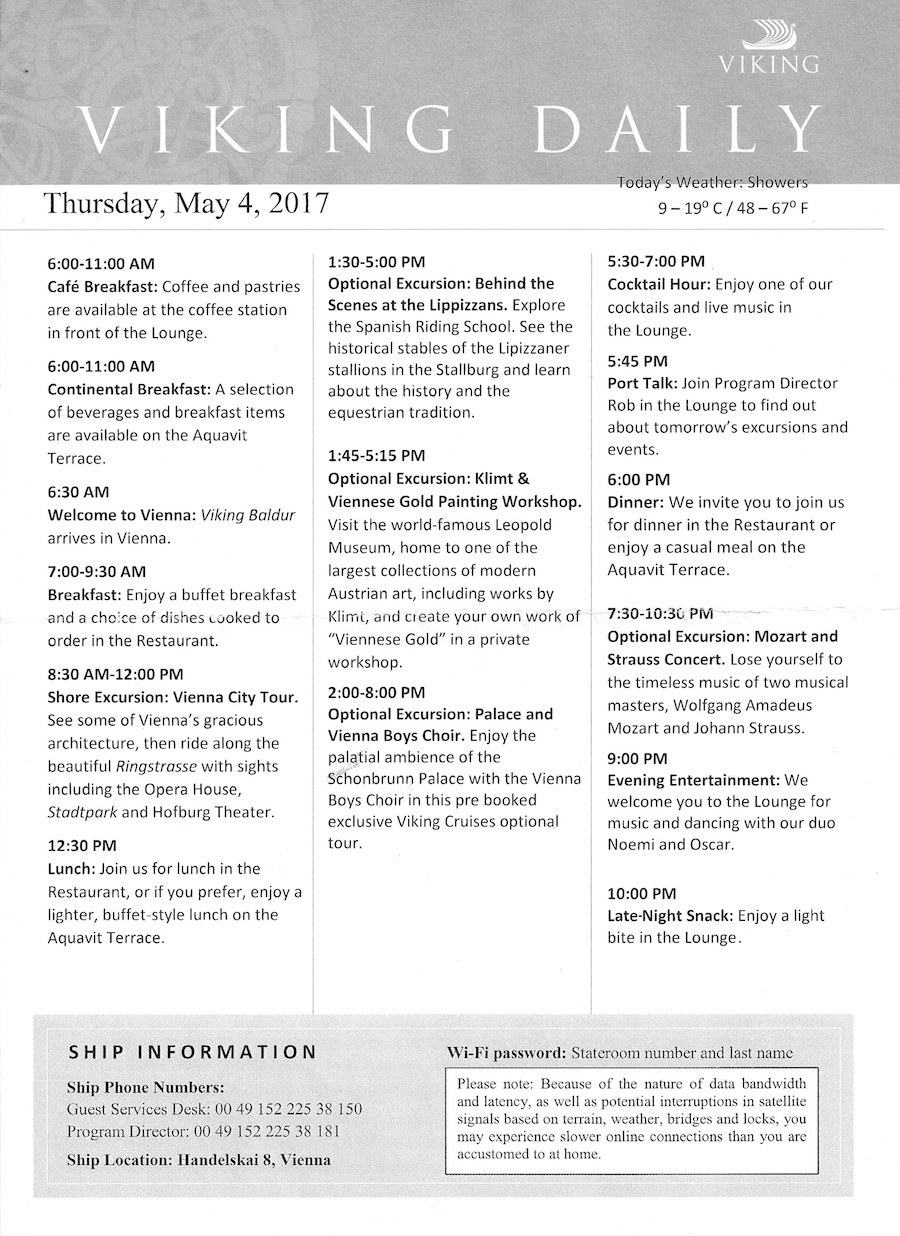

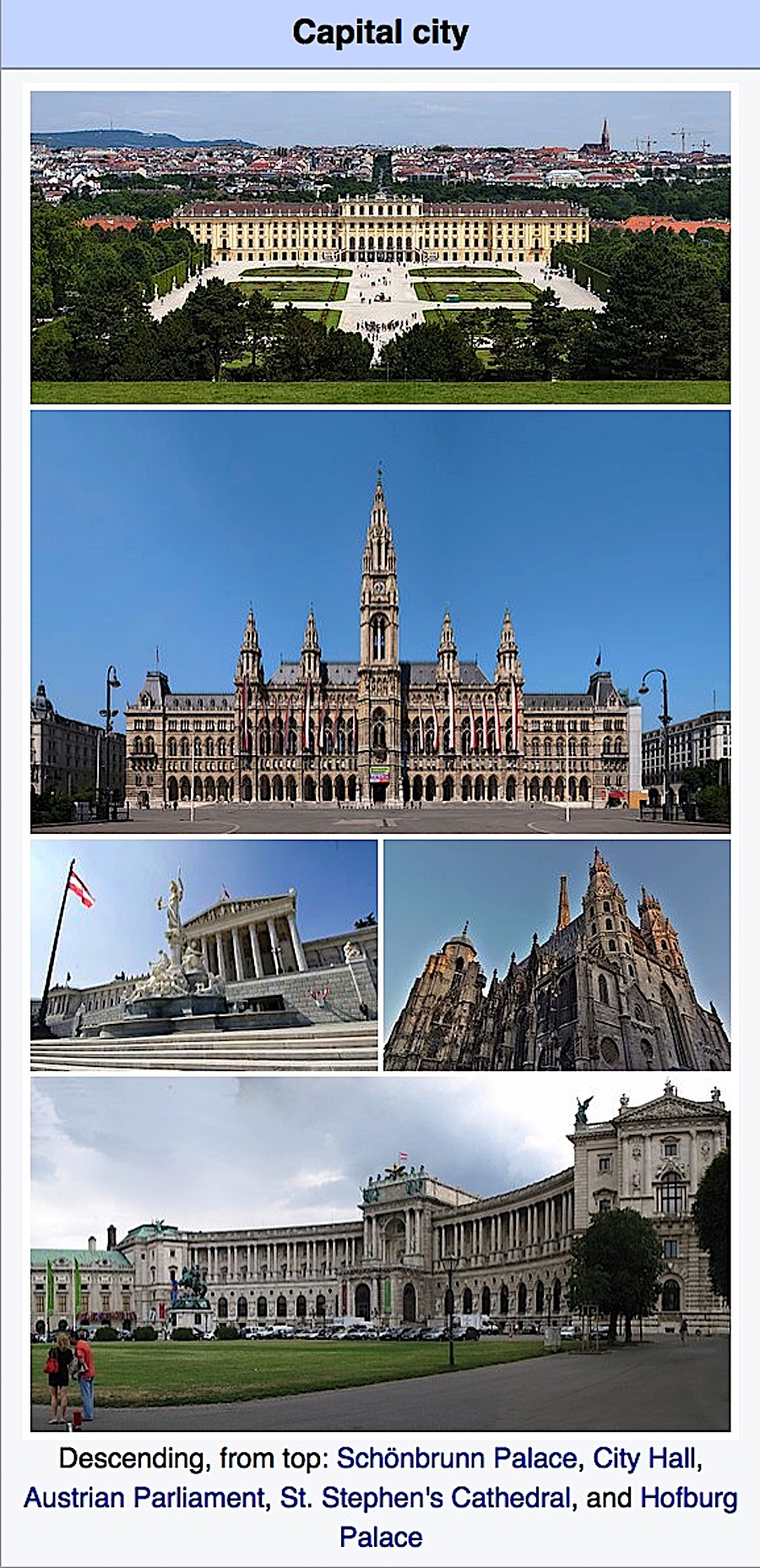

We pulled into Vienna early (6:30 AM) and there was some fog

At 8:30 AM we were turned loose and greeted by an old church
 Vienna has a prolific underground
Vienna has a prolific underground
Did You Know? - Vienna has an extensive transportation network with a unified fare system that integrates municipal, regional and railway systems under the umbrella of the Verkehrsverbund Ost-Region (VOR). Public transport is provided by buses, trams and 5 underground metro lines (U-Bahn), most operated by the Wiener Linien. There are also more than 50 S-train stations within the city limits. Suburban trains are operated by the ÖBB. The city forms the hub of the Austrian railway system, with services to all parts of the country and abroad. The railway system connects Vienna with other European cities, like Munich, Venice, Budapest, Prague, Bratislava and Zürich.

Urania is a public educational institute and observatory in Vienna
Did You Know? - During World War II, the Urania was severely damaged and the dome with the observatory was totally destroyed. After its reconstruction, it was reopened in 1957. The observatory itself has been continually improved technically over the years.
It was named after the Muse Urania who represents Astronomy.
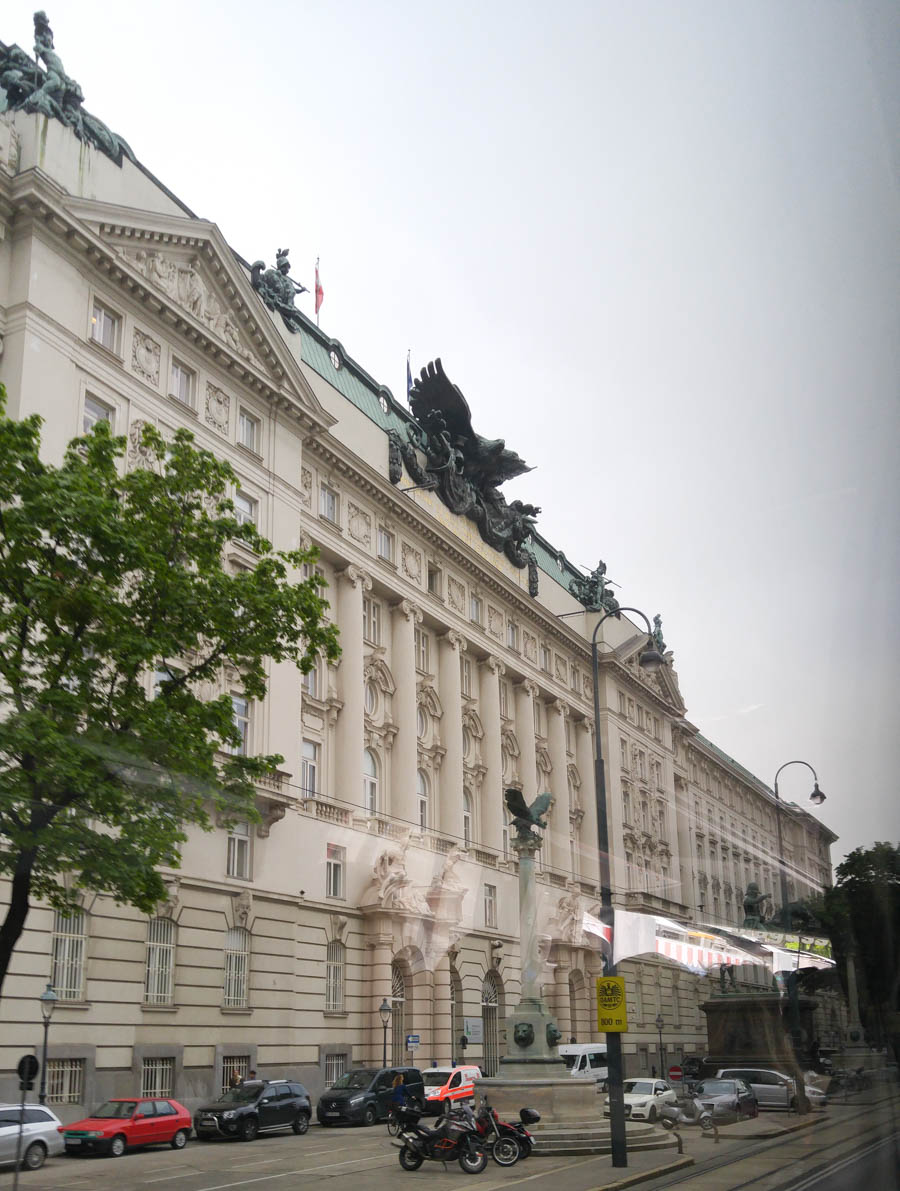
Government building are all throughout the middle of the city
War Ministry building on Ringstraße, Vienna
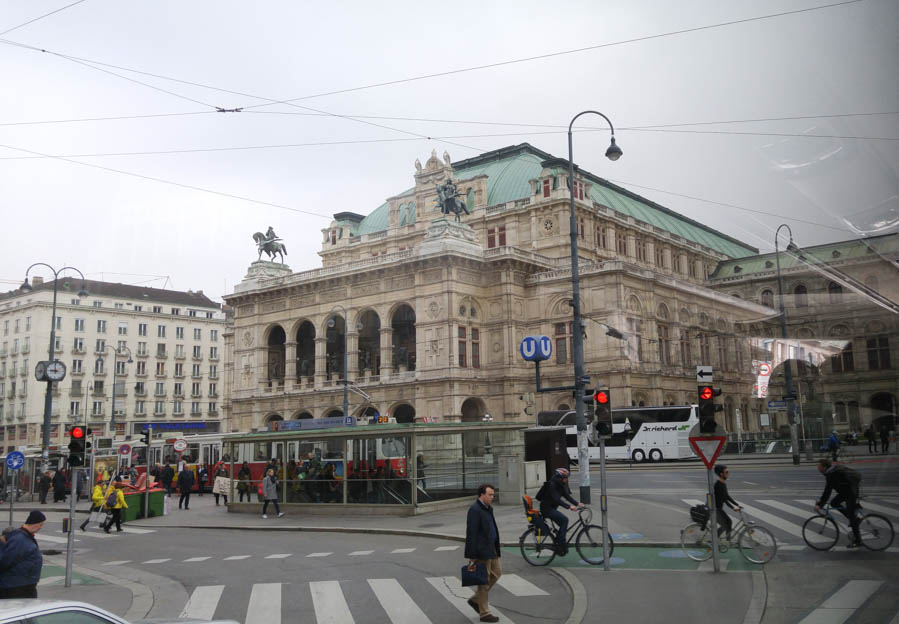
The Vienna Opera House (Click for a full sized image)

Under construction circa 1863
Did You Know? - The Vienna State Opera (German: Wiener Staatsoper) is an Austria opera house and opera company based in Vienna, Austria. It was originally called the Vienna Court Opera (Wiener Hofoper). In 1920, with the replacement of the Habsburg Monarchy by the First Austrian Republic, it was renamed the Vienna State Opera. The members of the Vienna Philharmonic are recruited from its orchestra.
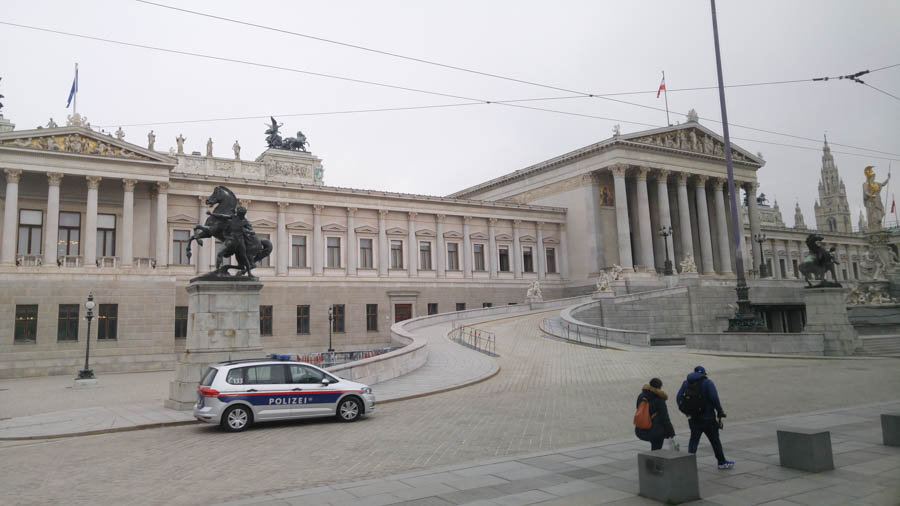
Austria Parliament
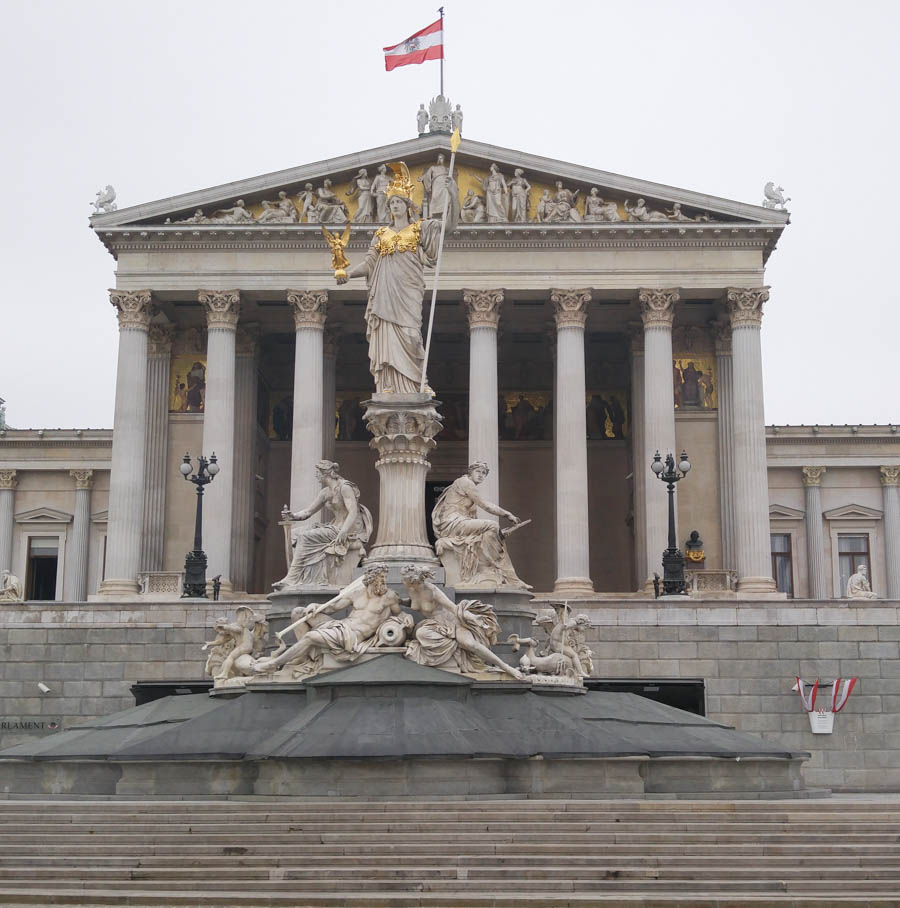
The Austrian Parliament Building in Vienna is where the two houses of the Austrian Parliament conduct their sessions

City Hall
Did You Know? - Wiener Rathaus (also Neues Rathaus) is the city hall of Vienna, located on Rathausplatz in the Innere Stadt district. Constructed from 1872 to 1883 in a Neo-Gothic style according to plans designed by Friedrich von Schmidt, it houses the office of the Mayor of Vienna as well as the chambers of the city council and Vienna Landtag diet.

We got dropped off for a short walk

The Natural History Museum (Click for full sized image)
Did You Know? - The Natural History Museum is a large natural history museum located in Vienna, Austria. The museum's website provides an overview in the form of a virtual tour.
The museum's earliest collections of artifacts were begun over 250 years ago.
Today, its collections on display cover 8,700 square meters (94,000 sq ft).
As of 2011, the museum houses approximately 30 million objects and the number is growing. Behind the scenes, collections comprising some 25 million specimens and artifacts are the essential basis for the work of over 60 staff scientists. Their main fields of research cover a wide range of topics from the origins of the Solar System and the evolution of animals and plants to human evolution, as well as prehistoric traditions and customs.

Maria-Theresien-Platz is a large public square in Vienna, Austria, that joins the Ringstraße with the Museumsquartier, a museum of modern arts located in the former Imperial Stables.

Walking around the building was a chore
 The Hofberg (Click for full sized image)
The Hofberg (Click for full sized image)

Rather large as seen from above
Did You Know? - The Hofburg is the former imperial palace in the centre of Vienna, Austria. Built in the 13th century and expanded in the centuries since, the palace has been the seat of power of the Habsburg dynasty rulers, and today the official residence and workplace of the President of Austria. It was the principal imperial winter residence, as Schönbrunn Palace was the summer residence.
Since 1279 the Hofburg area has been the documented seat of government. The Hofburg has been expanded over the centuries to include various residences (with the Amalienburg and the Albertina), the imperial chapel (Hofkapelle or Burgkapelle), the imperial library (Hofbibliothek), the treasury (Schatzkammer), the Burgtheater, the Spanish Riding School (Hofreitschule), the imperial mews (Stallburg and Hofstallungen).
The Hofburg, or Imperial Palace, stands in the middle of downtown Vienna. It consists of 18 wings and 19 courtyards and houses a large number of museums, displaying unique treasures and collections.

Come on in... The water is fine!
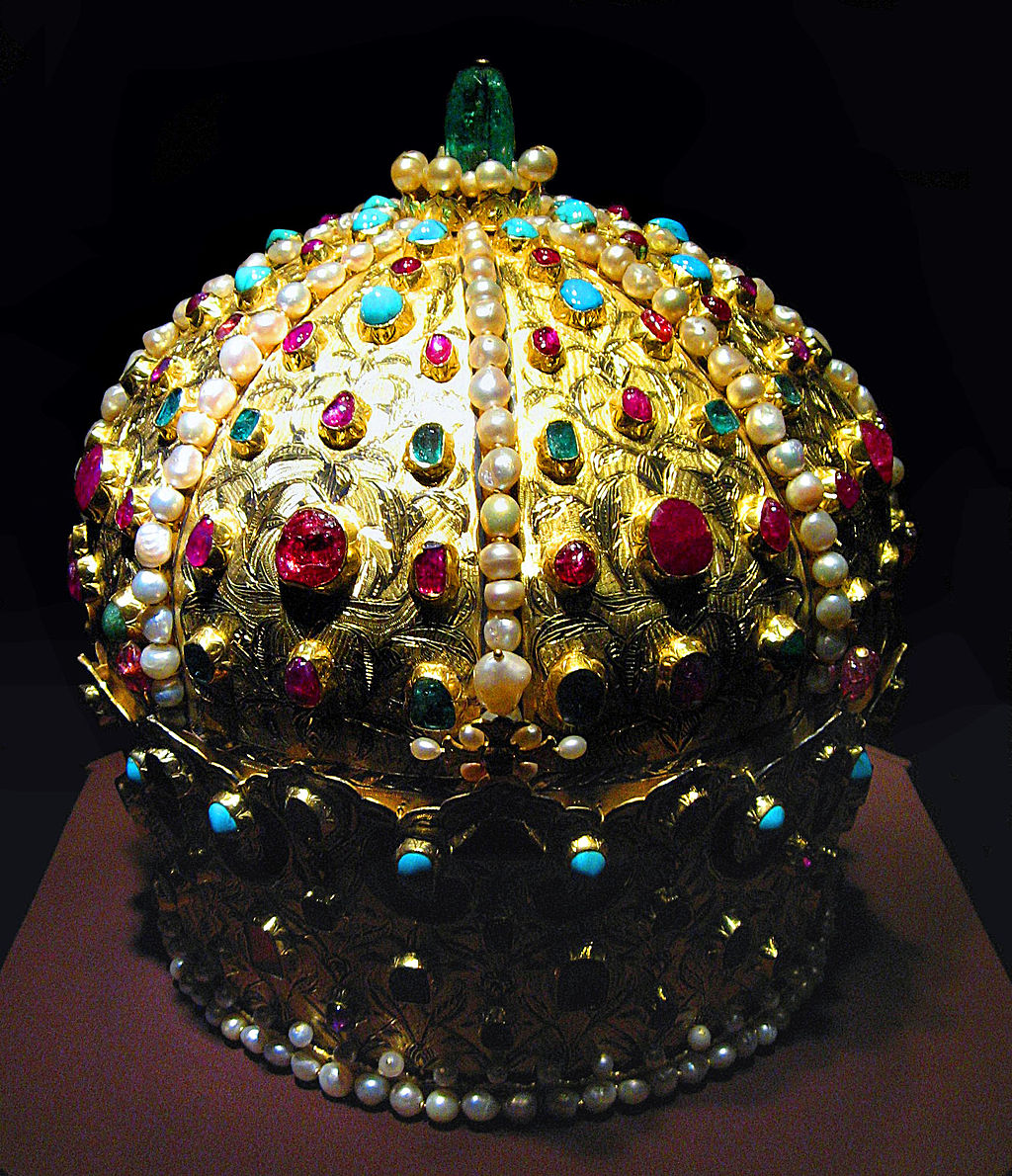 Crown of Bocskay, Imperial Treasury, Hofburg Palace, Vienna
Crown of Bocskay, Imperial Treasury, Hofburg Palace, Vienna
(Click for the full sized image)
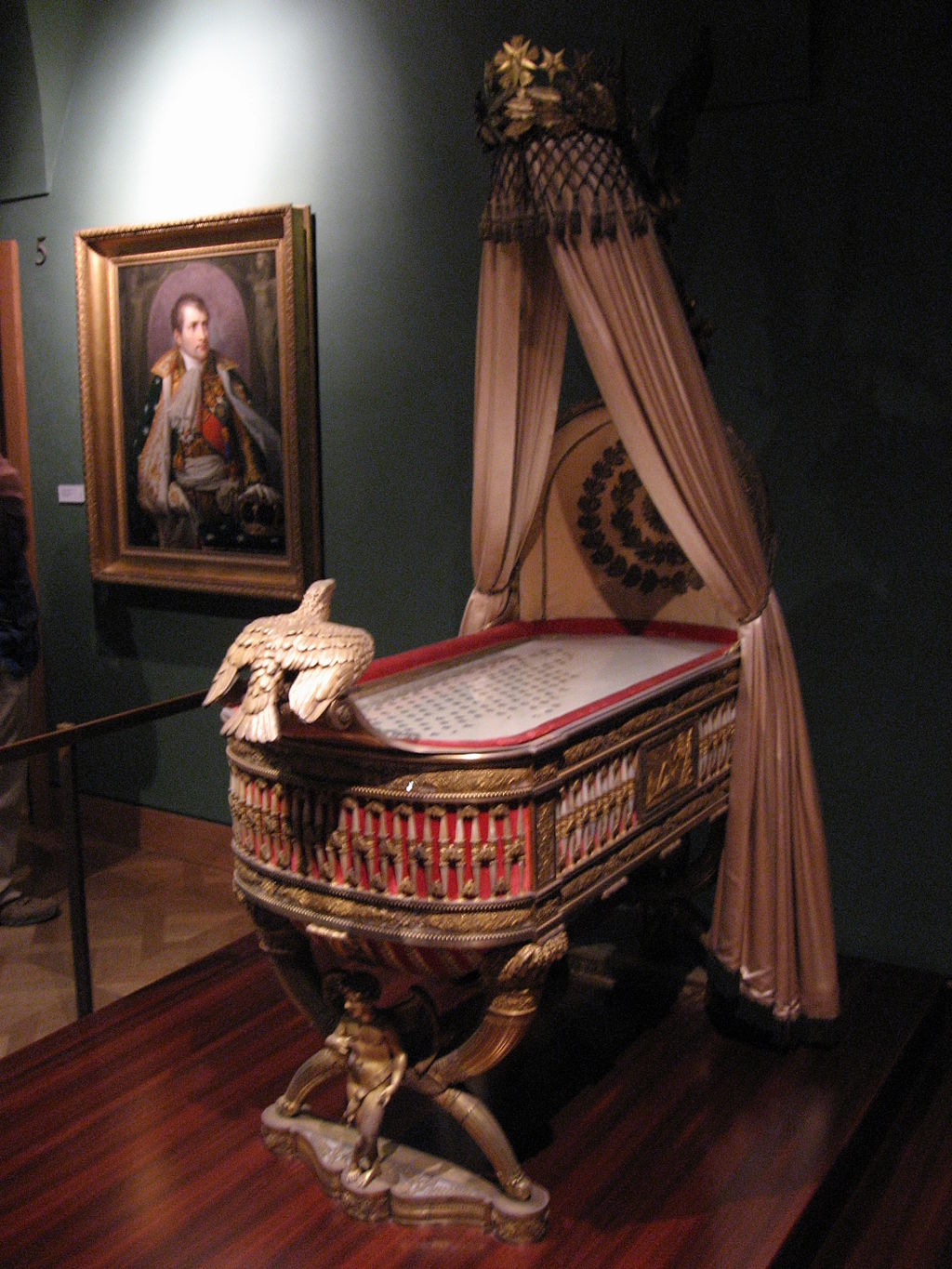
The Cradle of the King of Rome

Amazing clothes...
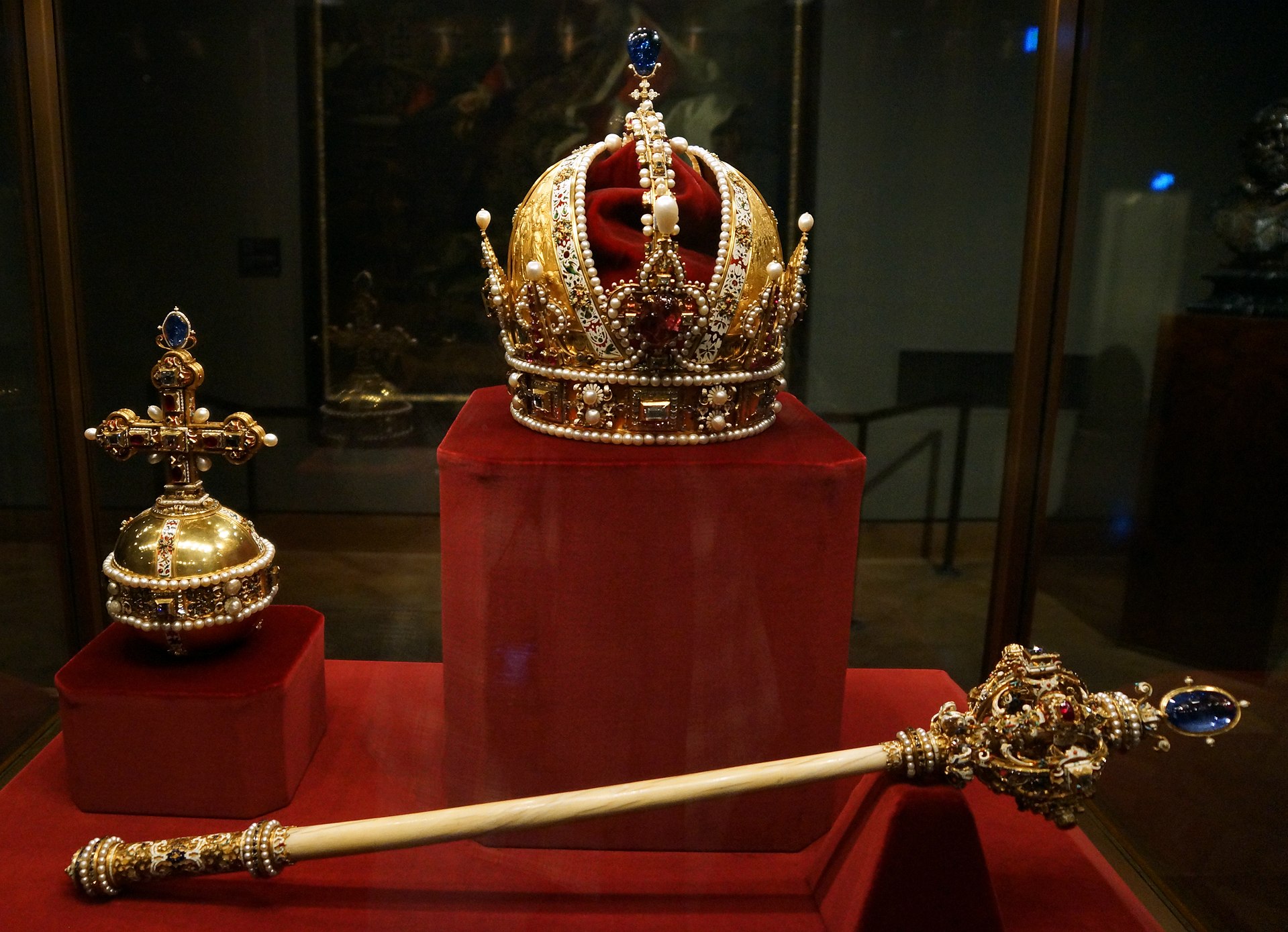 Imperial Orb, Crown, and Scepter of Austria
Imperial Orb, Crown, and Scepter of Austria
(Click for full sized image)

Imperial Crown of Austria displayed in the Imperial Treasury at the Hofburg Palace in Vienna, Austria
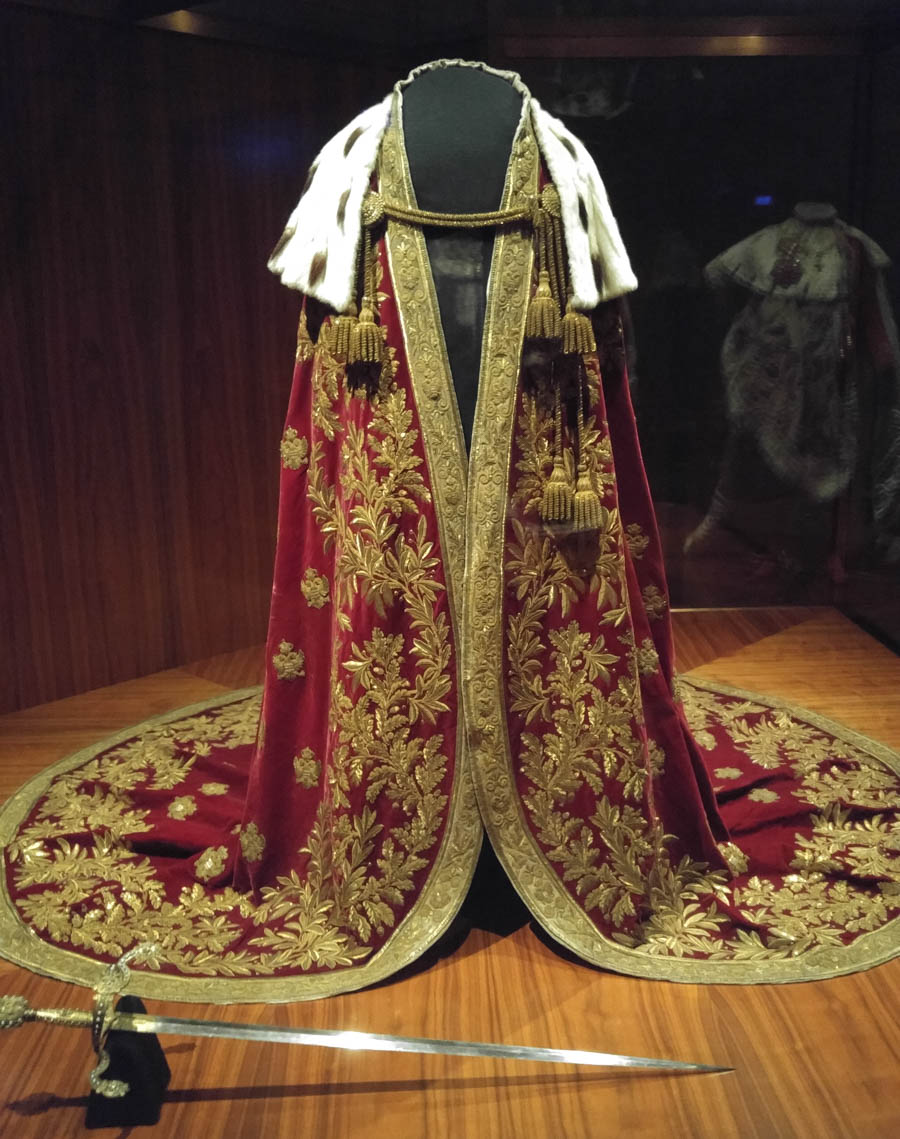
A wee bit fancy?
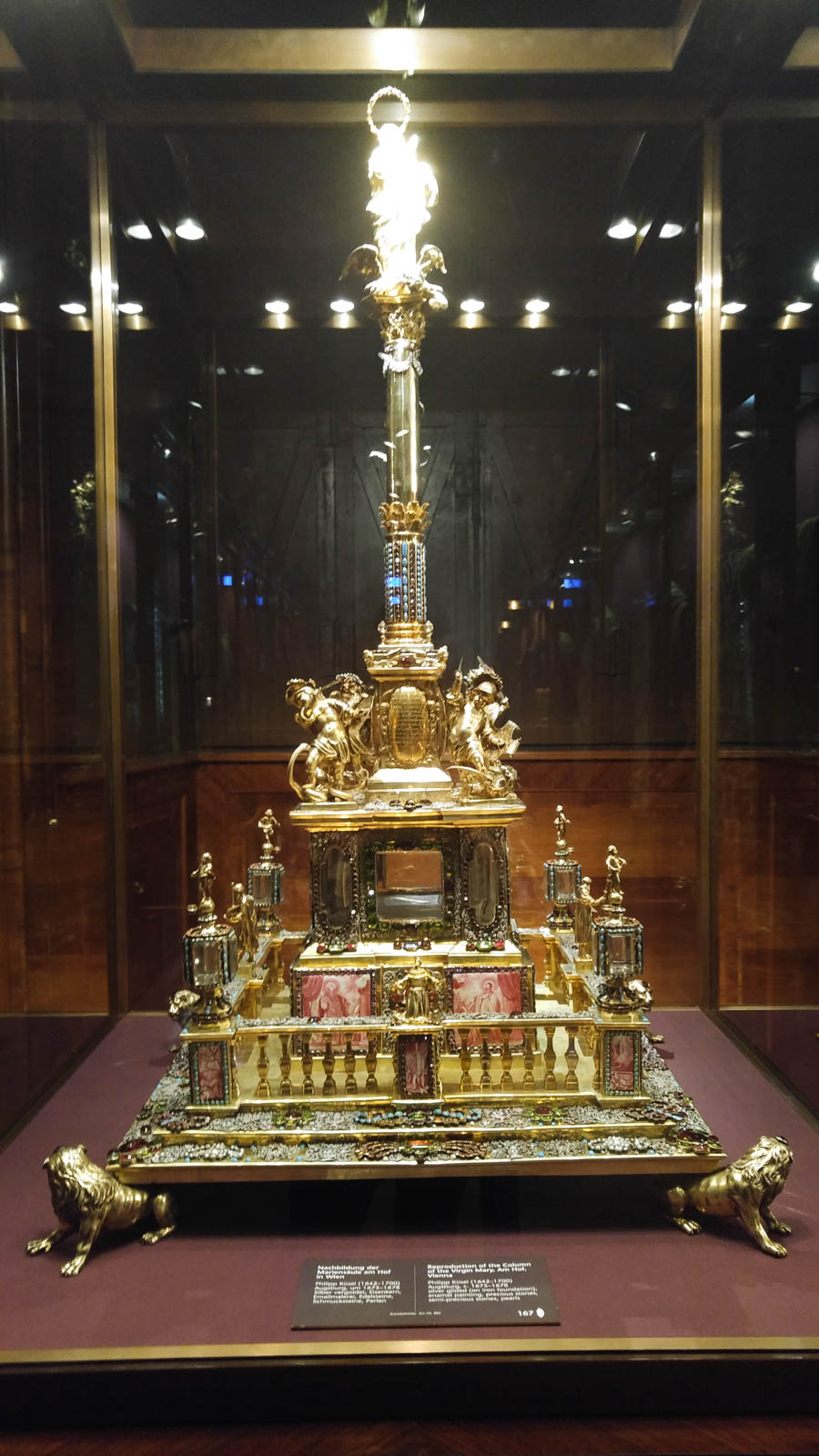
Loads of gold used in this masterpiece
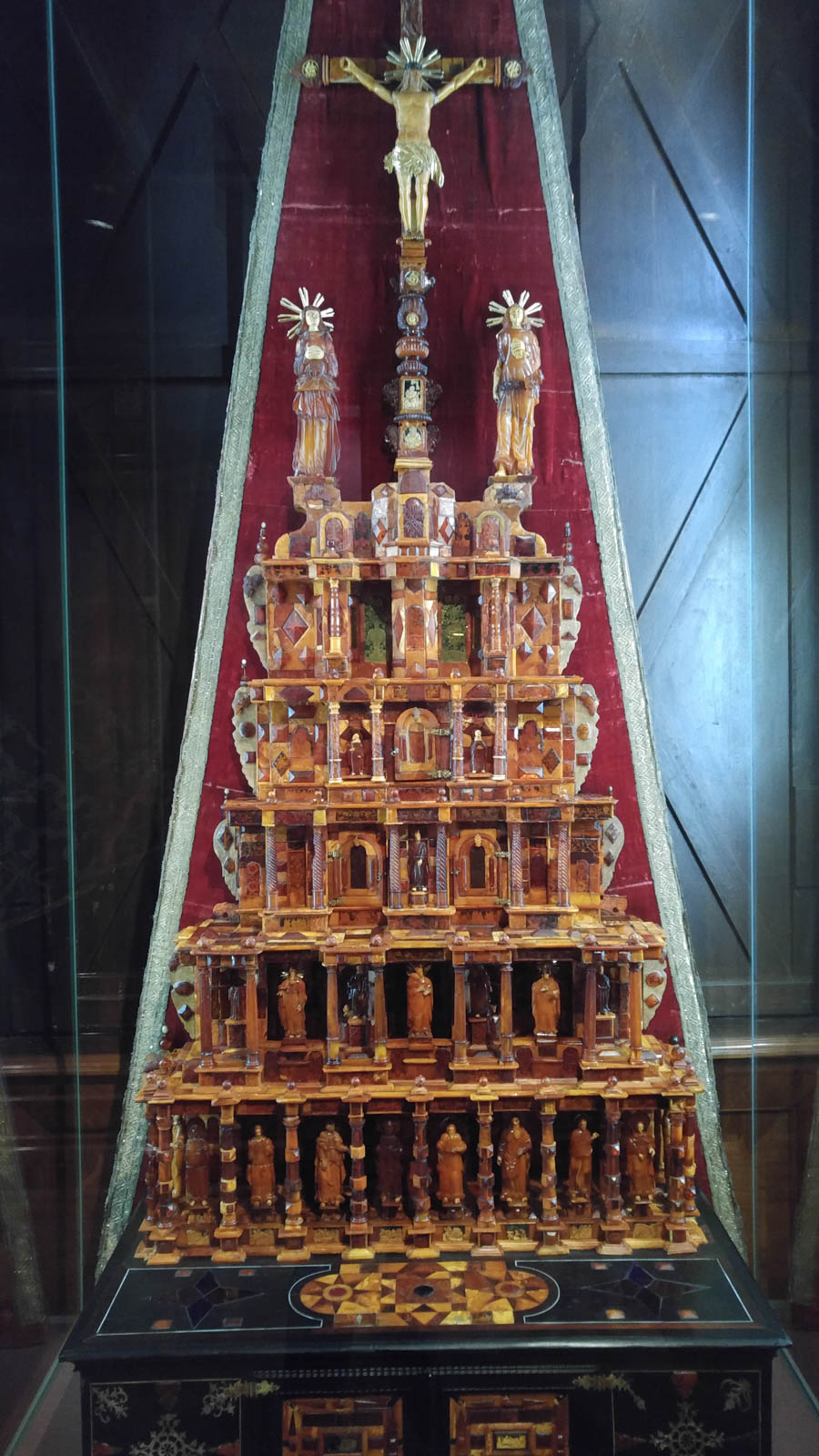
The Amber Alter
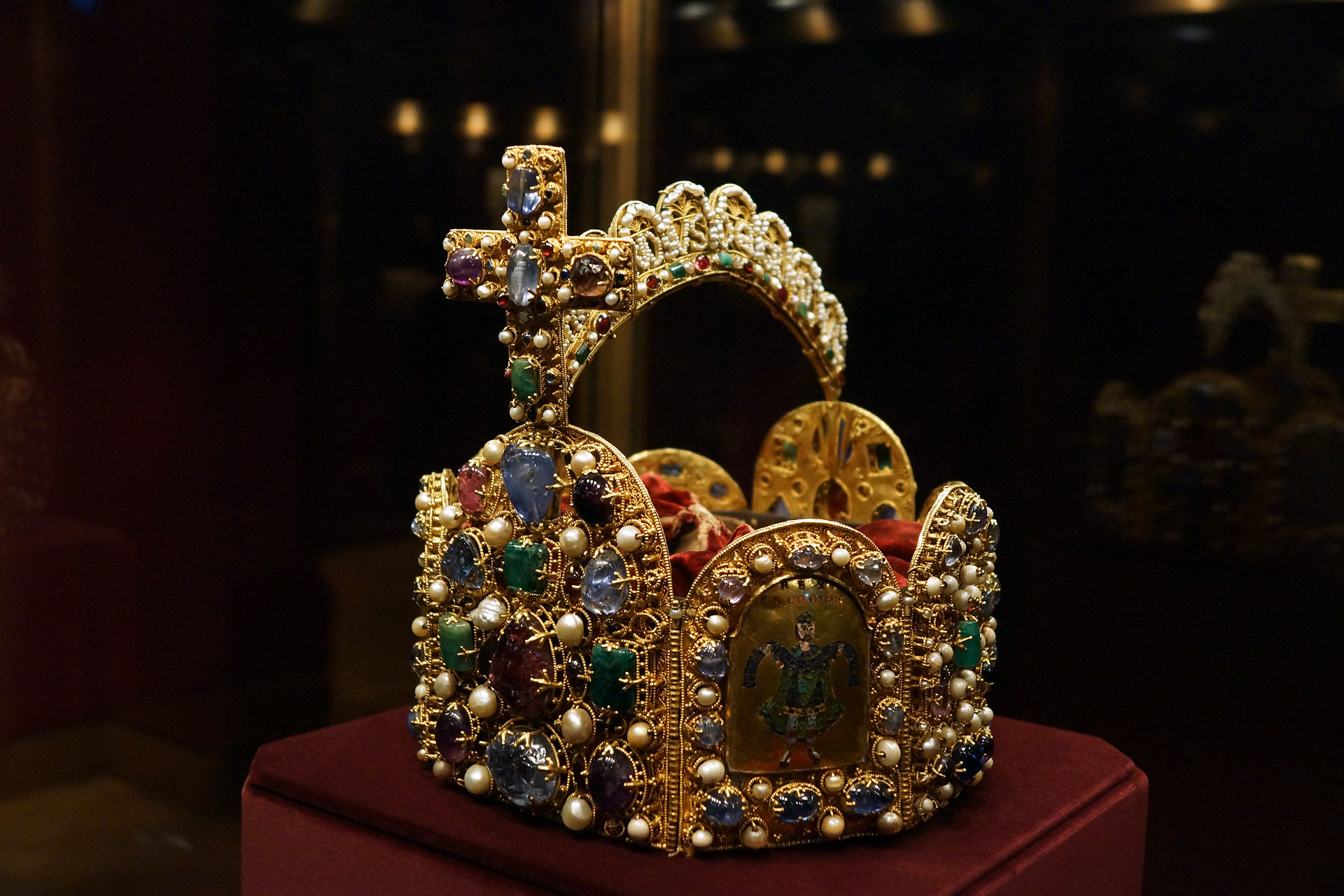
Imperial Crown of the Holy Roman Empire, Imperial Treasury, Vienna
(Click for full sized image)
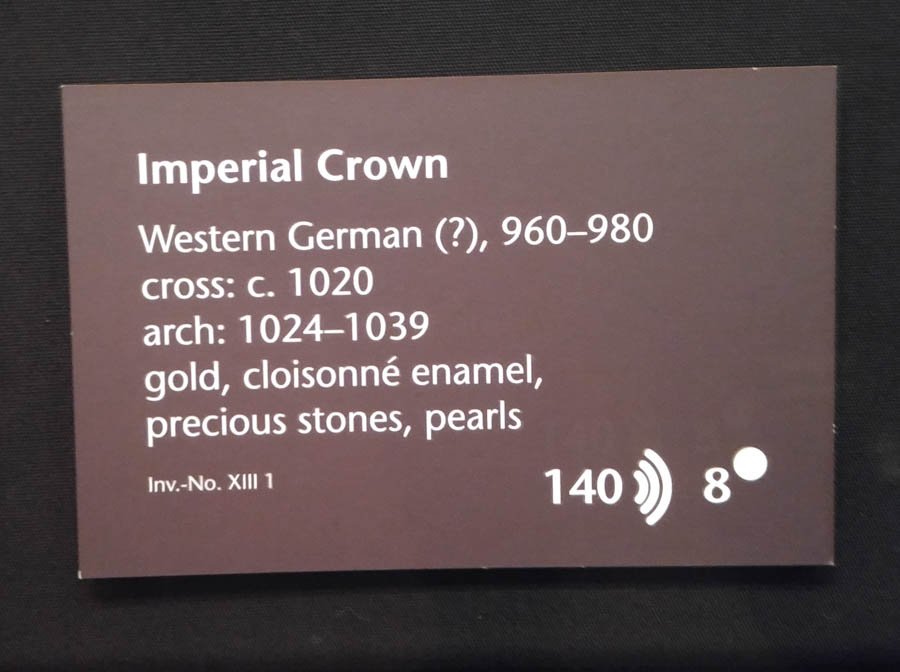
Nice sign-age and we have audio
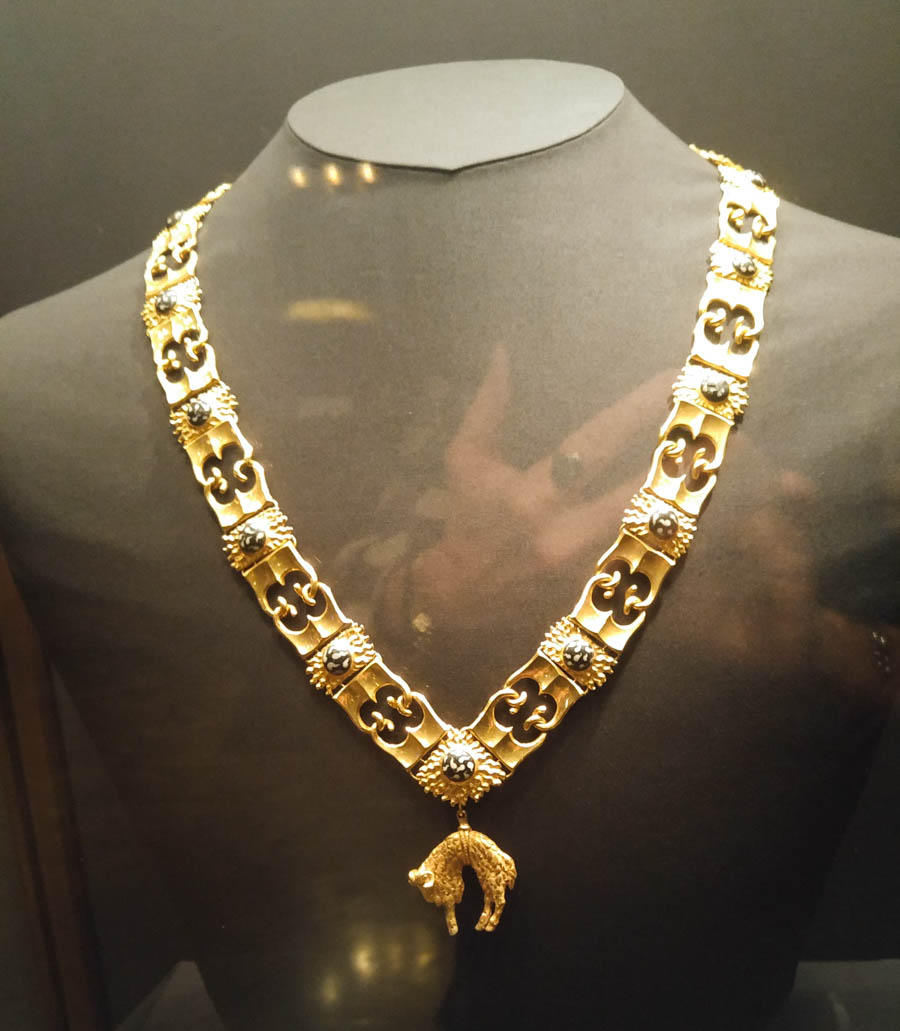
Neck Chain of a Knight of the Order of the Golden Fleece
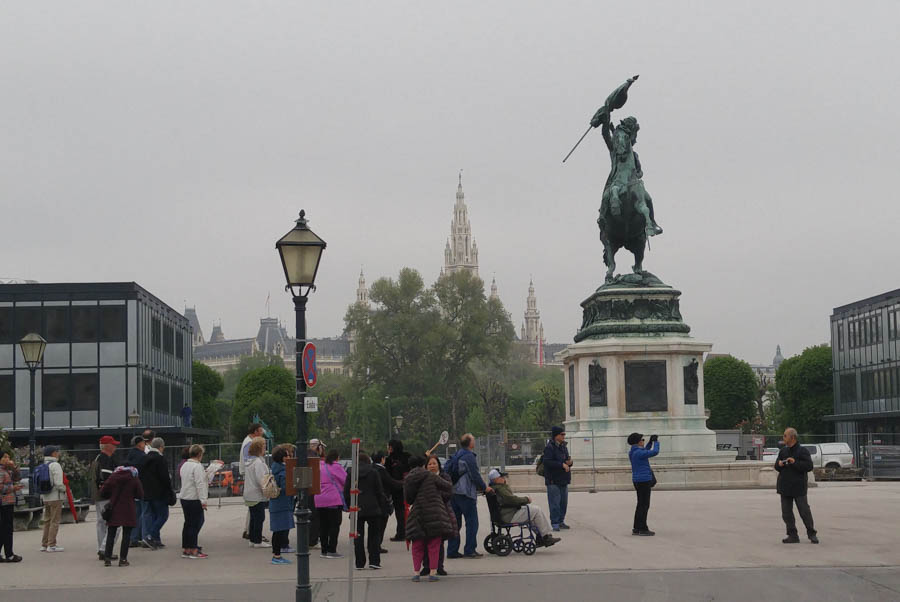
Statue of Archduke Charles of Austria, Duke of Teschen
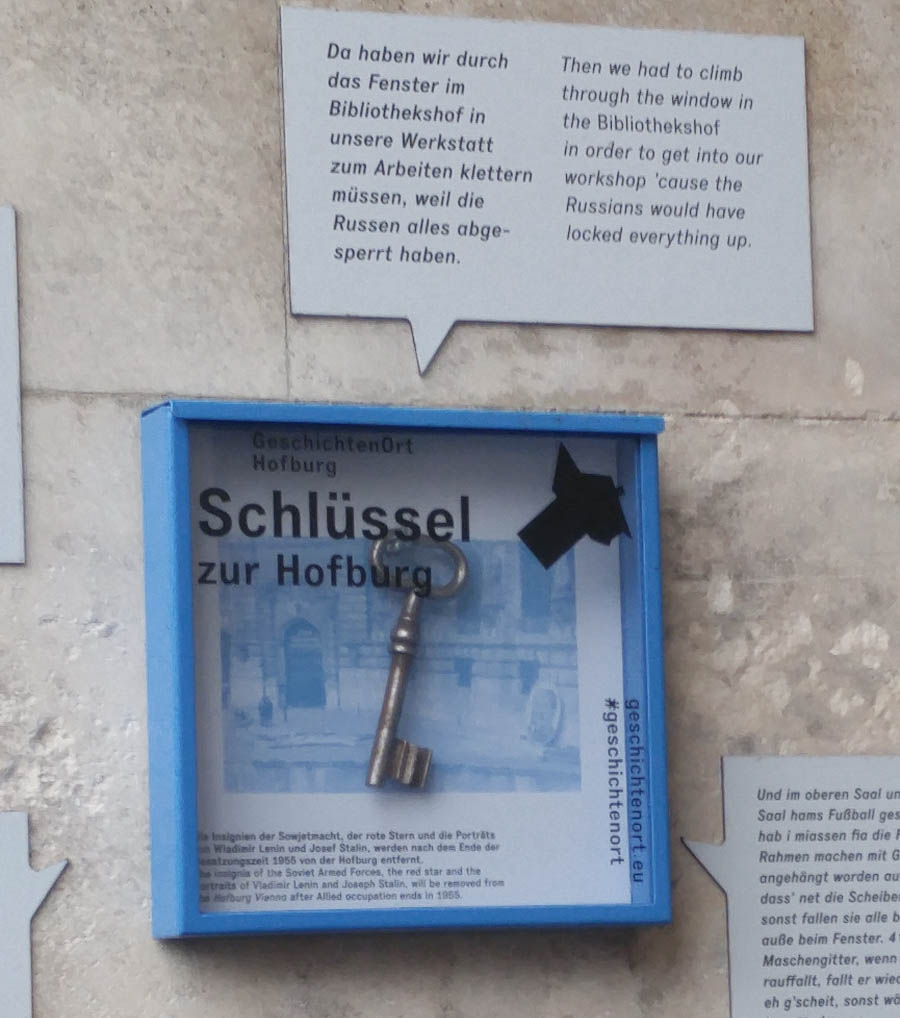
The Hofburg was taken by the Russians in 1945 and the common people were locked out
- The Americans opened everything up!
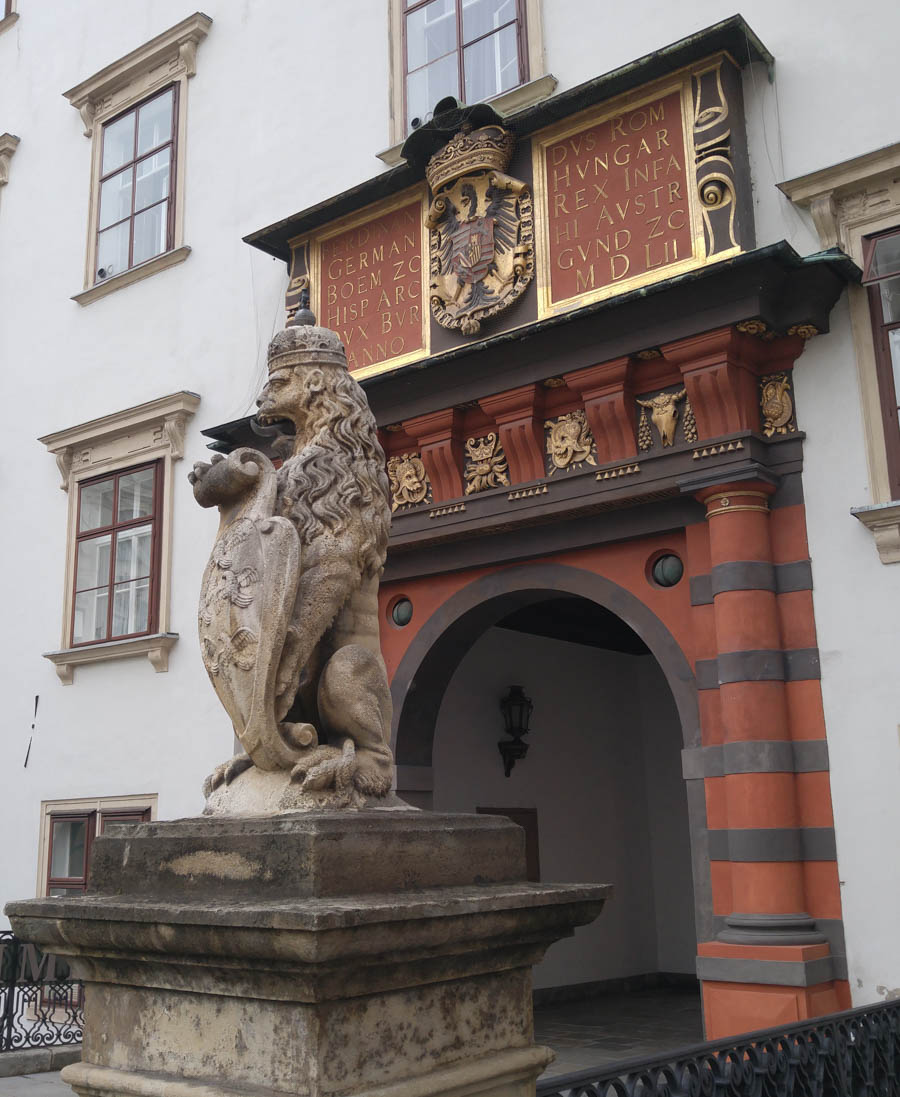
The Swiss Gate at Hofburg (Click for full sized image)

Paintings are priceless
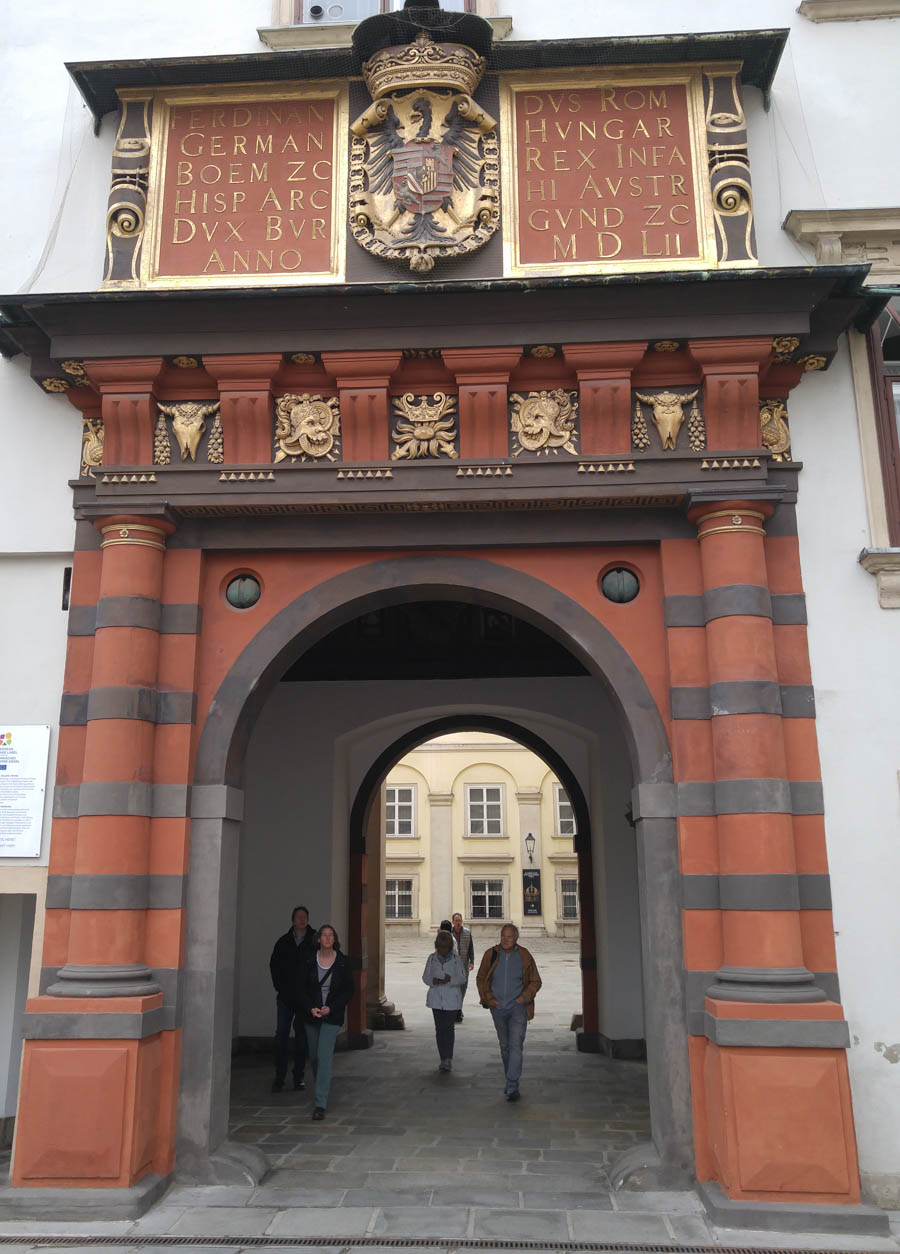
The Swiss Gate (Schweizertor), original main gate at Hofburg

No arguing with him!
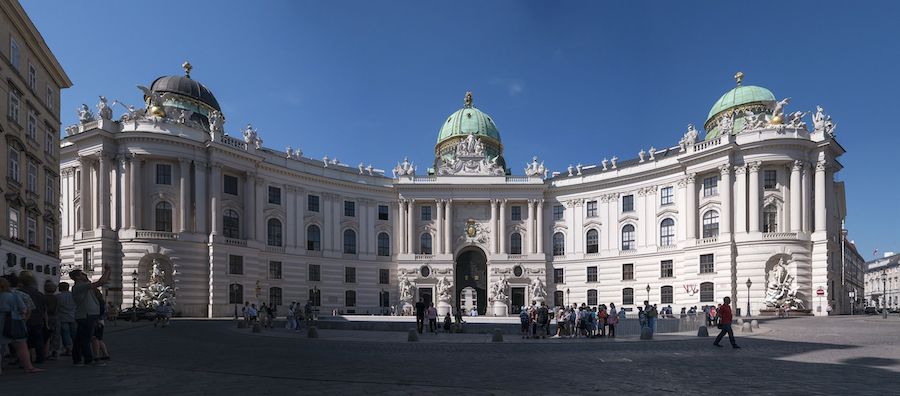
St. George's Cathedral on the grounds of Hofburg (See full sized image)

Truly a work of art
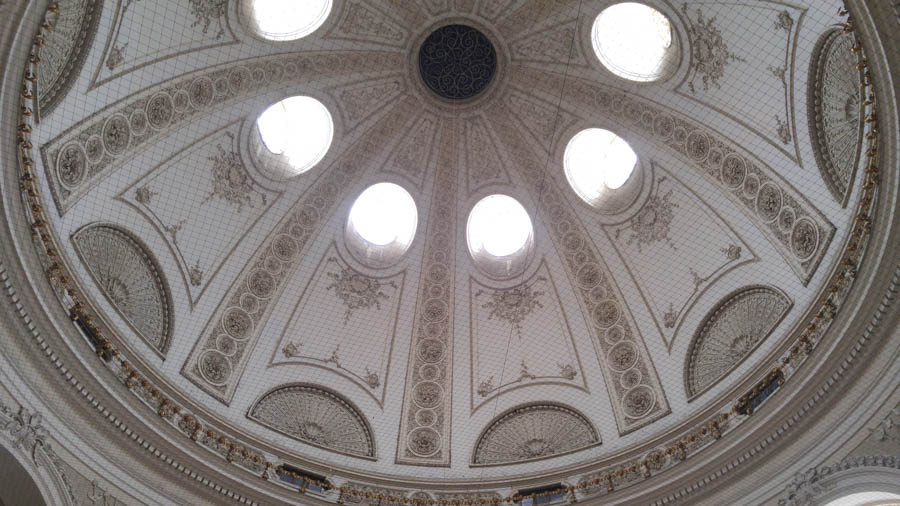
Making the cathedral quite bright inside
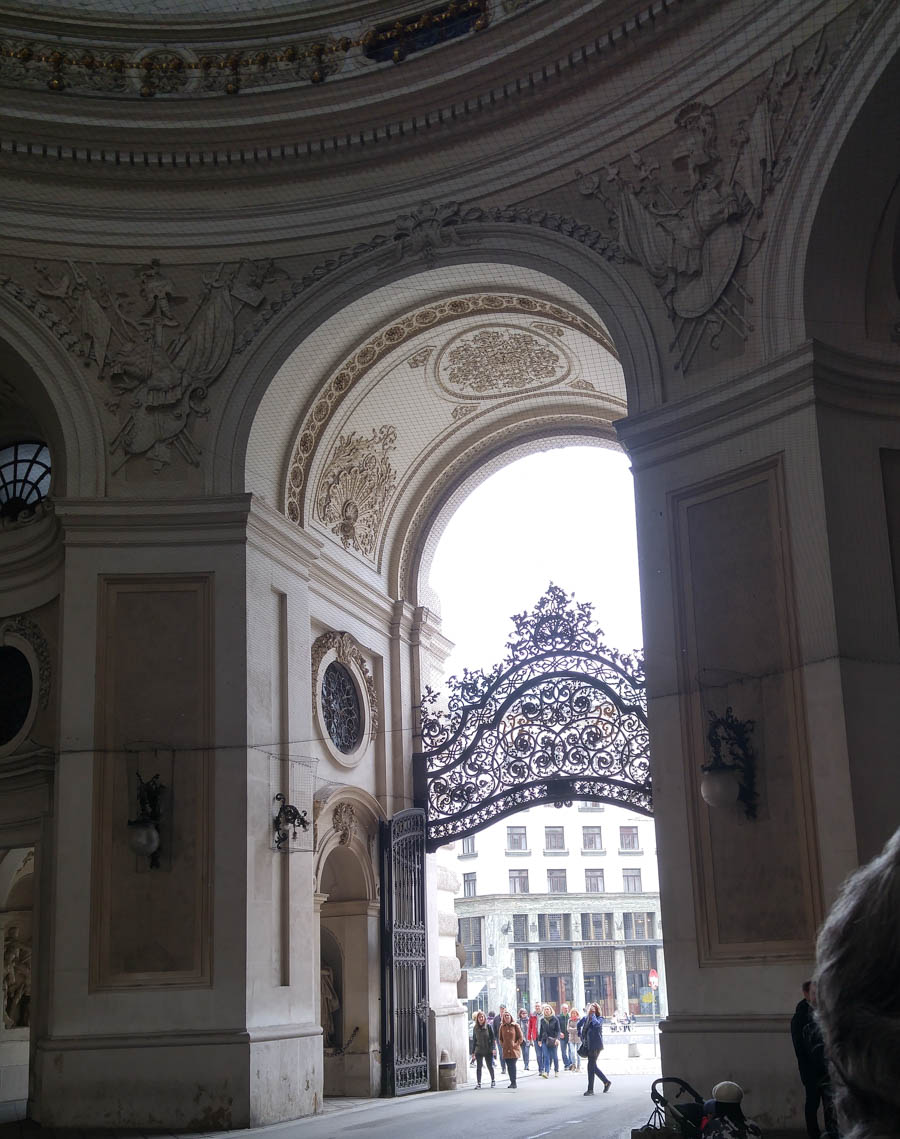
Back to "Civilization"

 The Spanish Riding School
The Spanish Riding School
Did You Know? - The Spanish Riding School (German: Spanische Hofreitschule) of Vienna, Austria, is a traditional riding school for Lipizzan horses, which perform in the Winter Riding School (Winterreitschule) in the Hofburg.
Not only is it a centre for classical dressage, the headquarters is a tourist attraction in Vienna that offers public performances as well as permitting public viewing of some training sessions.
The presentation builds on four centuries of experience and tradition in classical dressage. The leading horses and riders of the school also periodically tour and perform worldwide.
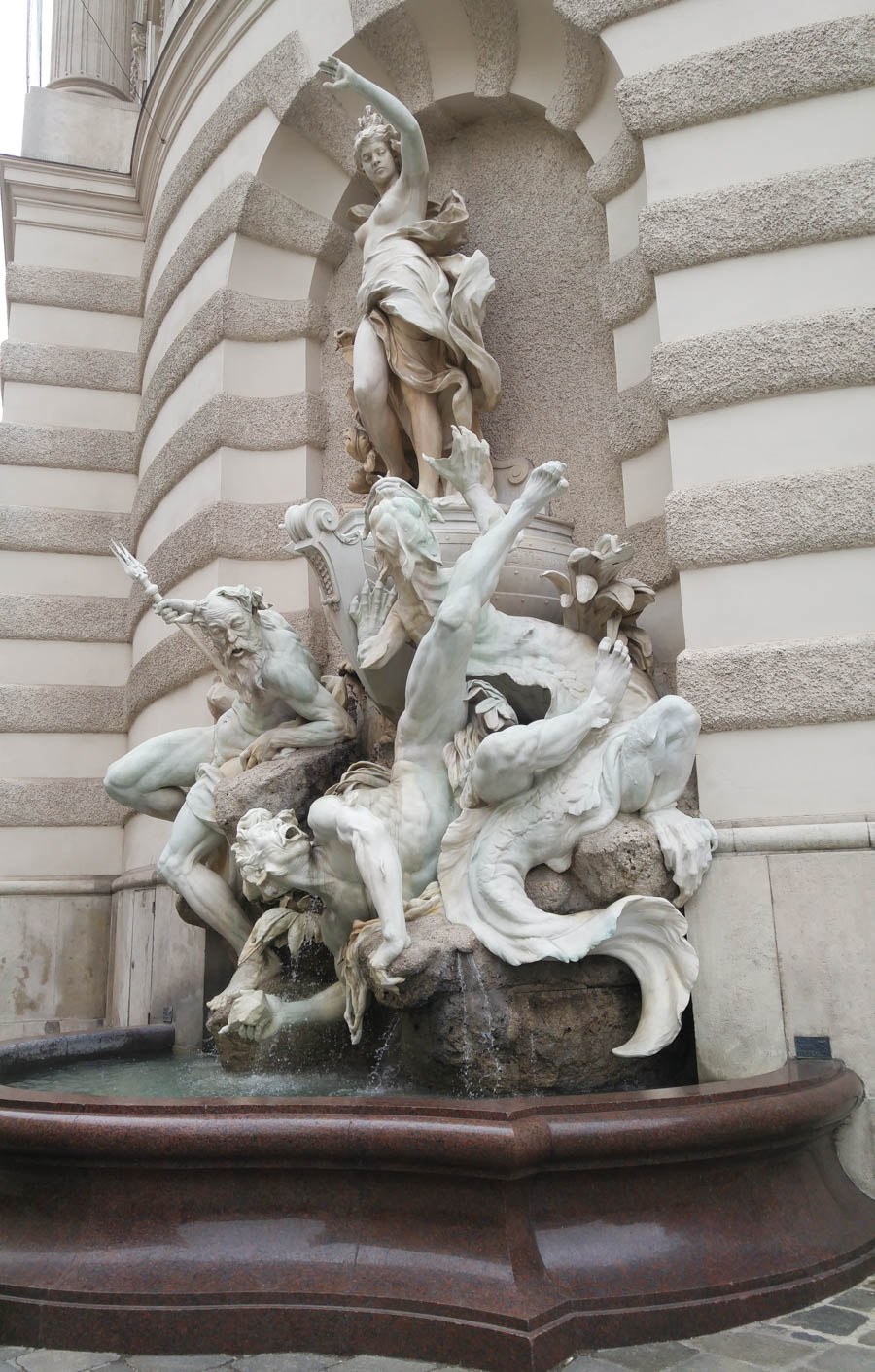 This statue sits to the right of St Michael Gate.
This statue sits to the right of St Michael Gate.
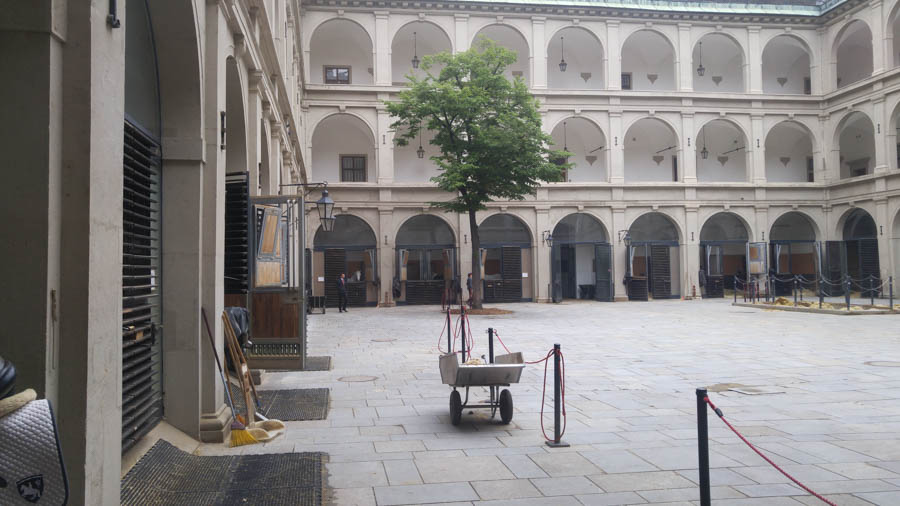
...and when it is cold outside (Click to see what they do!)

Treated like royalty

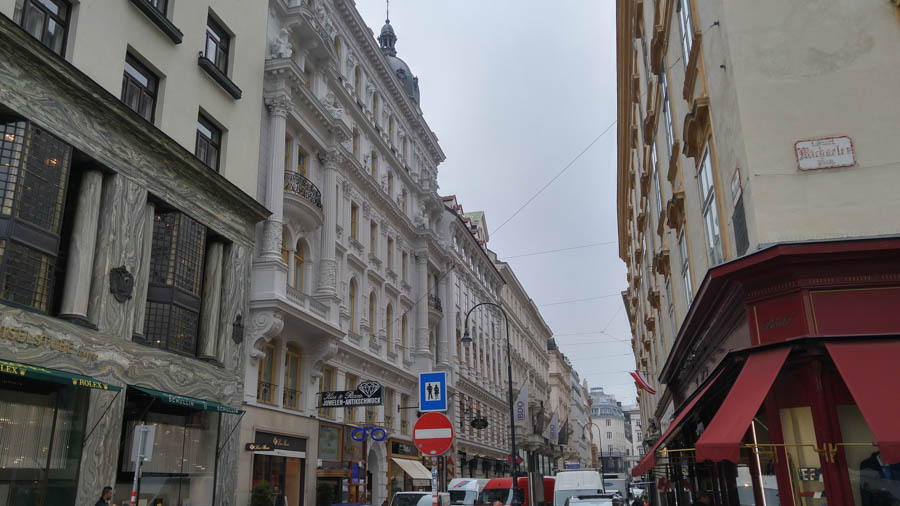
Where mere mortals walk...

... and have ice cream!
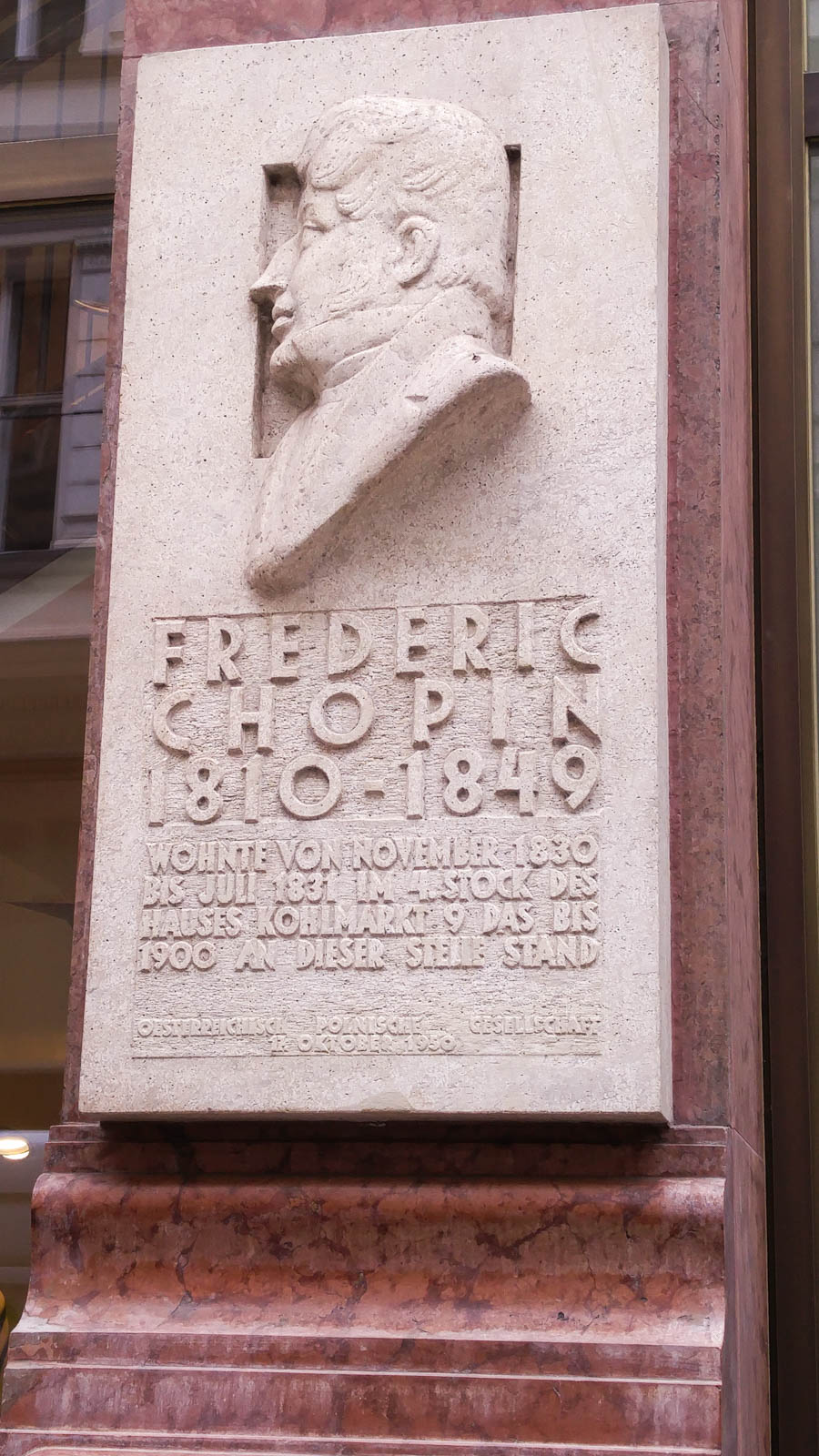
A tribute to Chopin
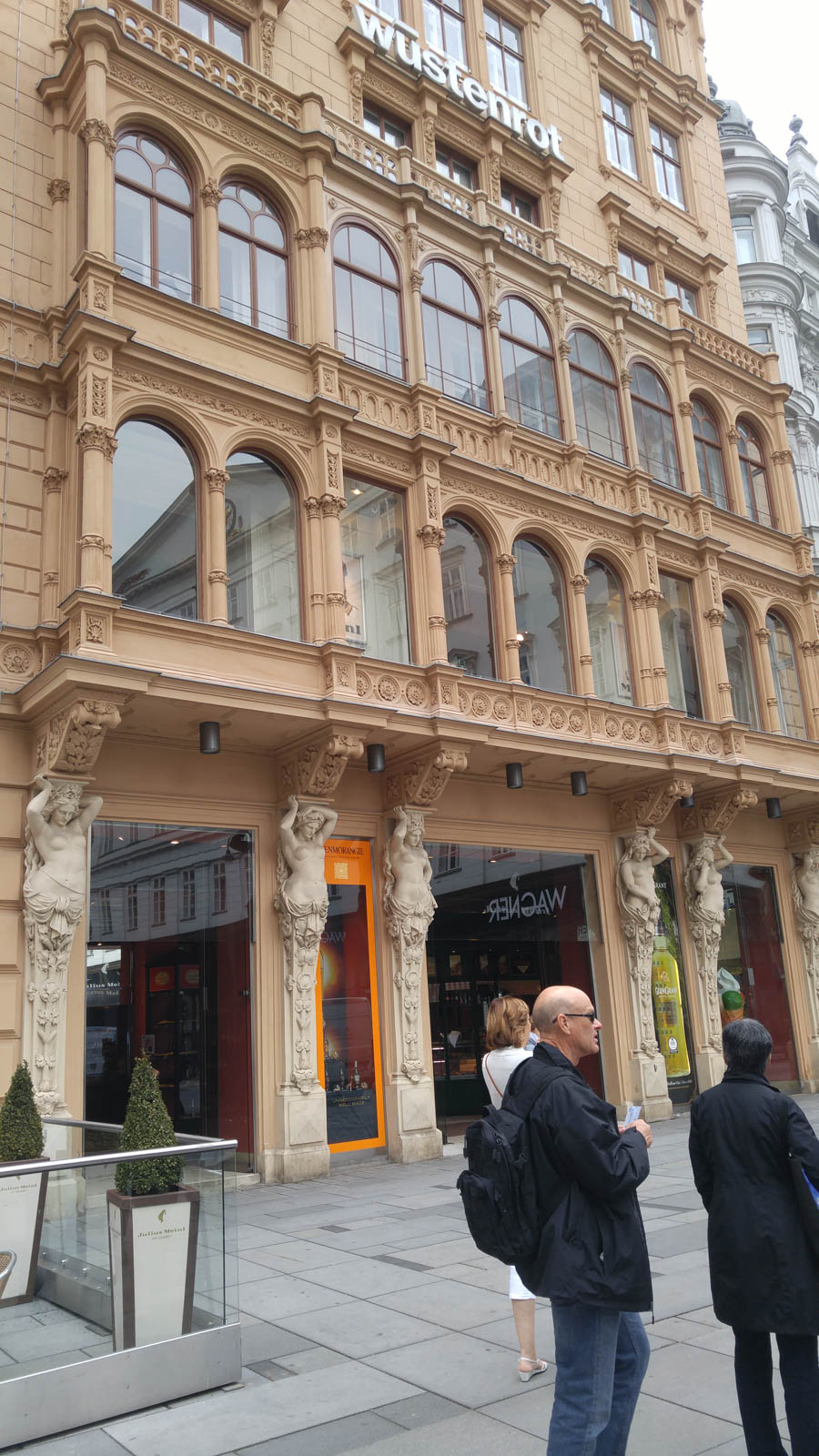
Wustenrot Building in Vienna, Austria
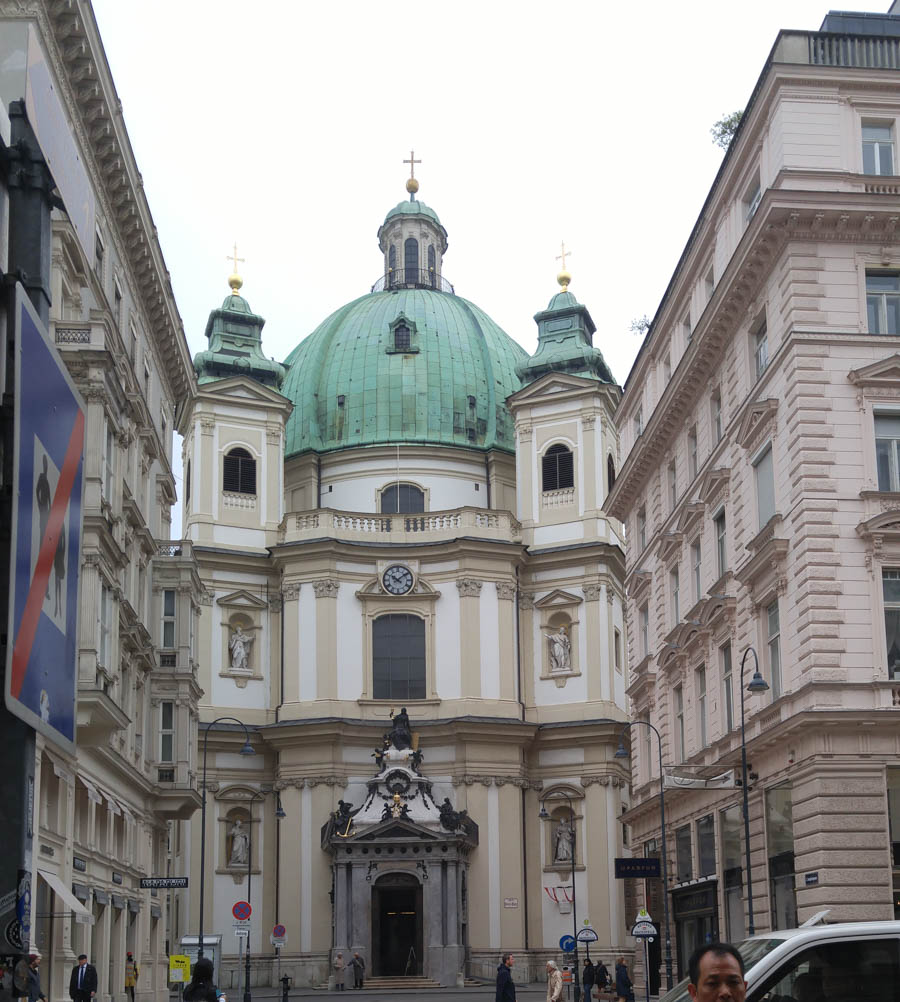
St. Peter's church (Click for large image)
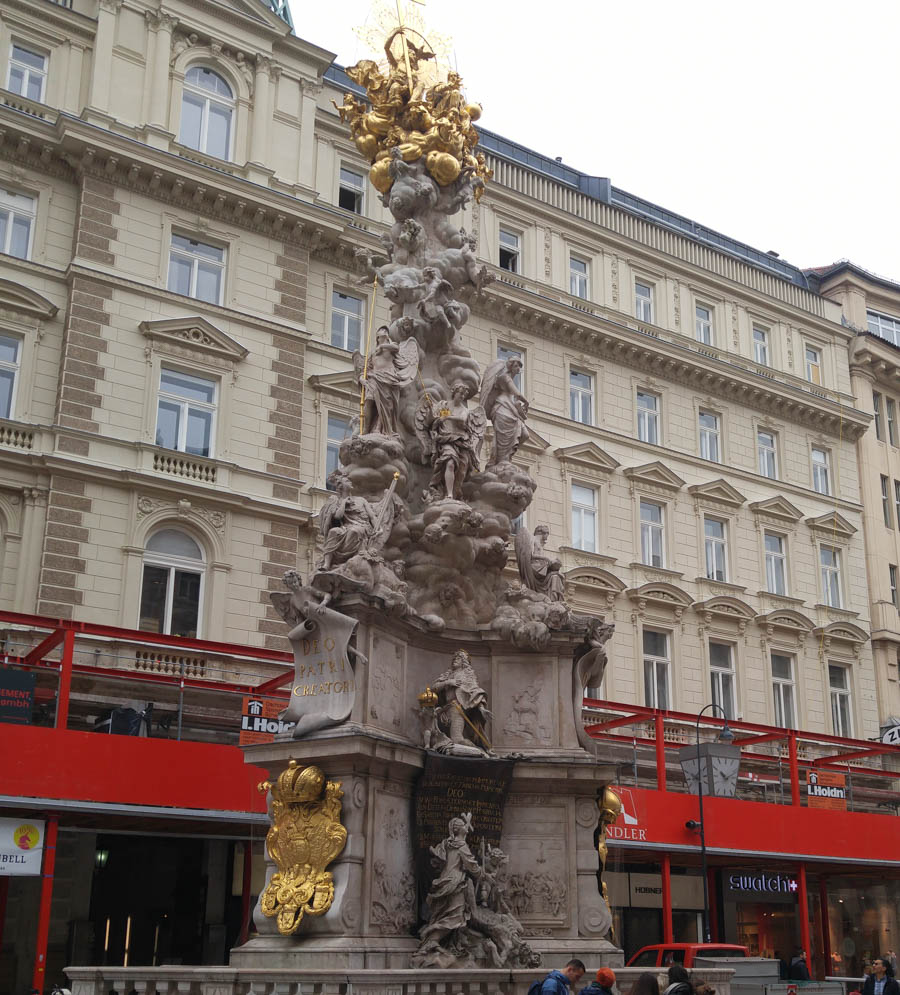
Fountains spring up everywhere

St.Stephen's Cathedral
Did You Know? - St. Stephen's Cathedral (more commonly known by its German title: Stephansdom) is the mother church of the Roman Catholic Archdiocese of Vienna and the seat of the Archbishop of Vienna, Christoph Cardinal Schönborn, OP.
The current Romanesque and Gothic form of the cathedral, seen today in the Stephansplatz, was largely initiated by Duke Rudolf IV (1339–1365) and stands on the ruins of two earlier churches, the first a parish church consecrated in 1147.
The most important religious building in Vienna, St. Stephen's Cathedral has borne witness to many important events in Habsburg and Austrian history and has, with its multi-coloured tile roof, become one of the city's most recognizable symbols.
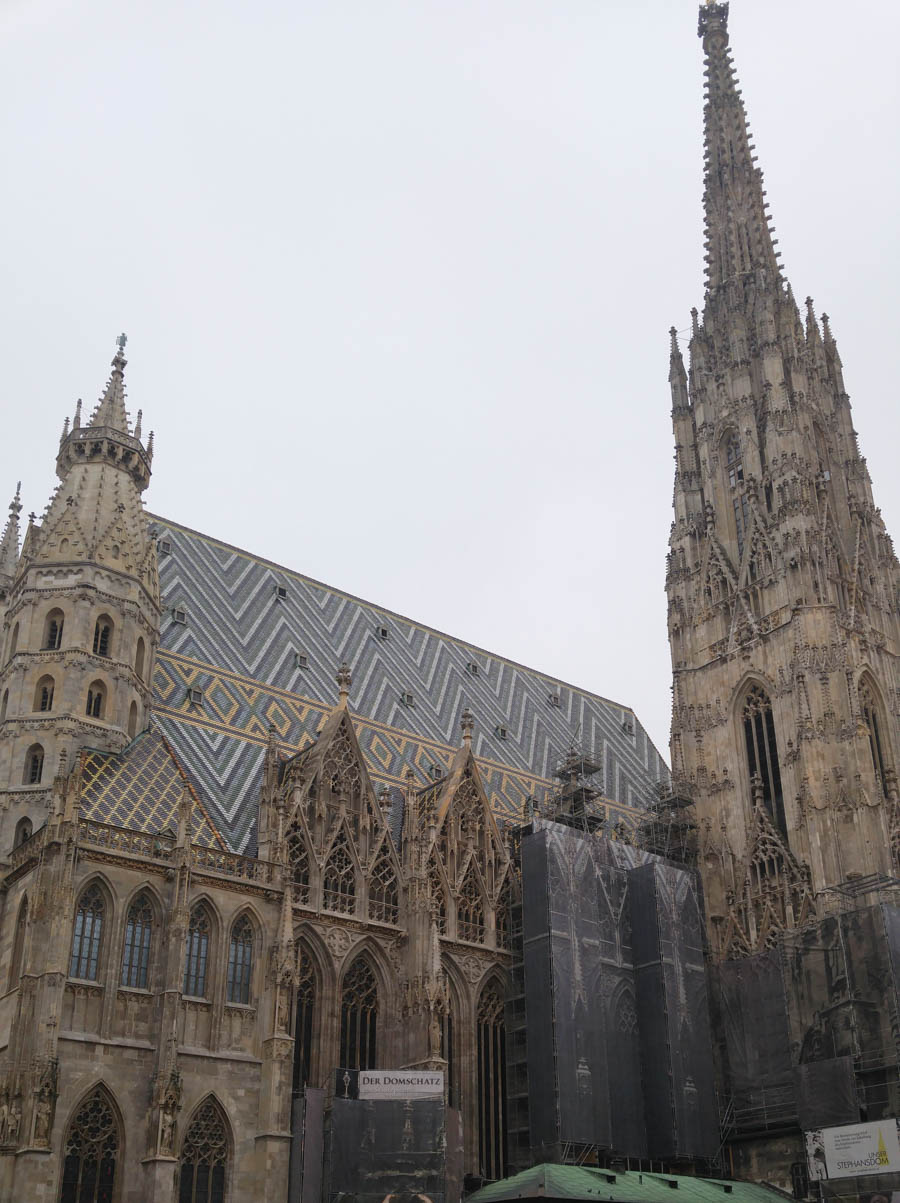 Amazing roof
Amazing roof
Did You Know? - The glory of St. Stephen's Cathedral is its ornately patterned, richly colored roof, 111 meters (364 ft) long, and covered by 230,000 glazed tiles. Above the choir on the south side of the building the tiles form a mosaic of the double-headed eagle that is symbolic of the empire ruled from Vienna by the Habsburg dynasty.
On the north side the coats of arms of the City of Vienna and of the Republic of Austria are depicted. In 1945, fire caused by World War II damage to nearby buildings leapt to the north tower of the cathedral and destroyed the wooden framework of the roof.
Replicating the original bracing for so large a roof (it rises 38 meters above the floor) would have been cost prohibitive, so over 600 metric tons of steel bracing were used instead. The roof is so steep that it is sufficiently cleaned by the rain alone and is seldom covered by snow
.
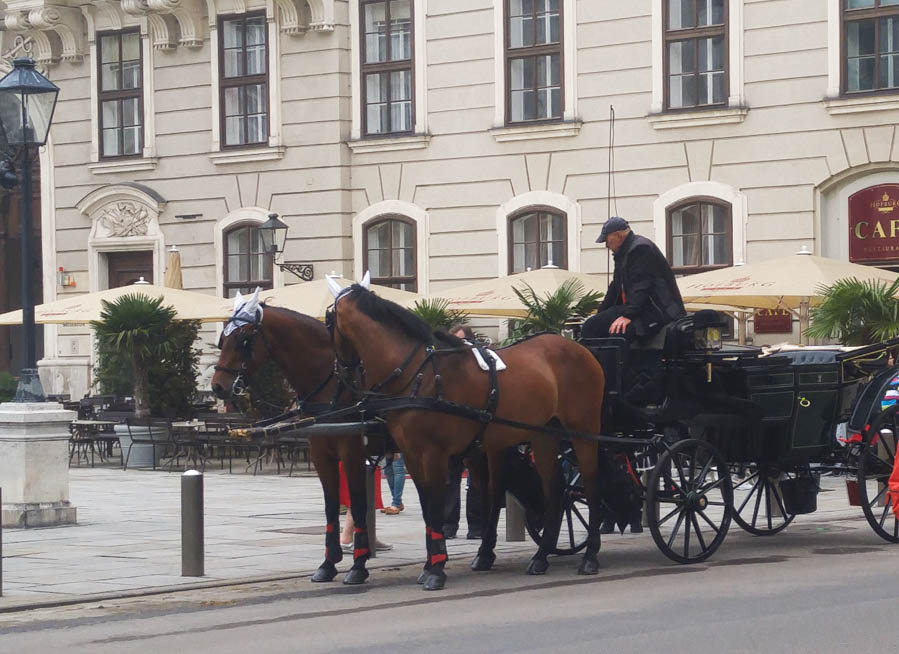 Should we take a carriage ride? Or walk?
Should we take a carriage ride? Or walk?
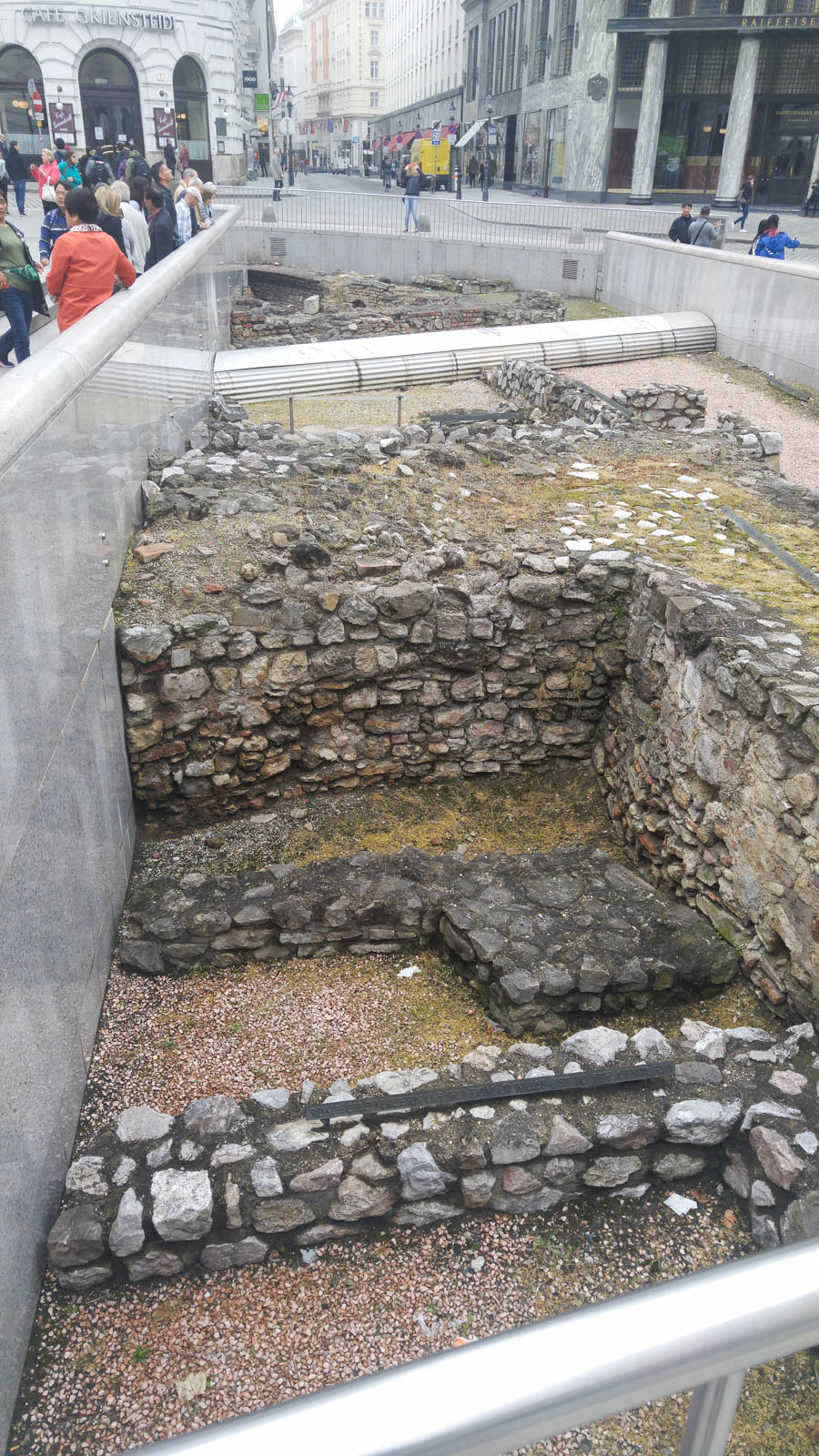
Easy to see the many layers of foundations that existed in prior years
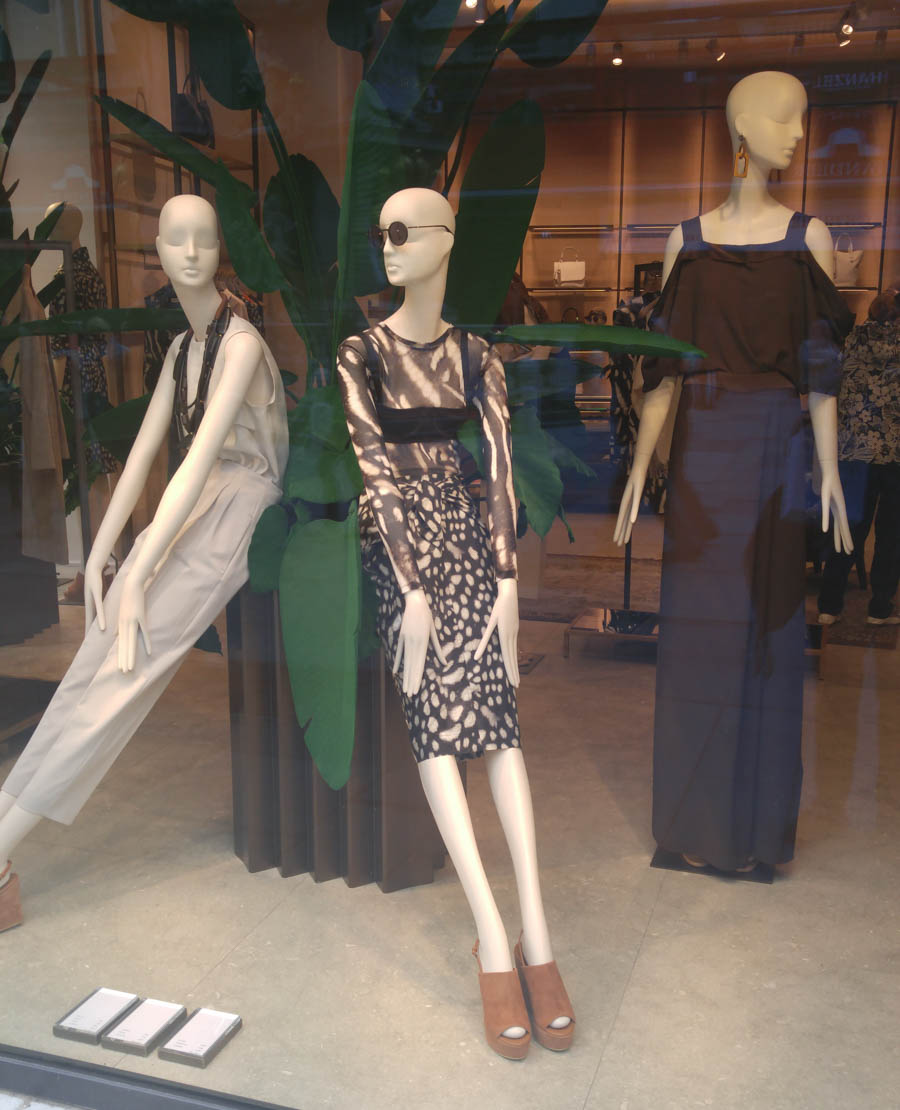
Vienna is a fashion hot spot
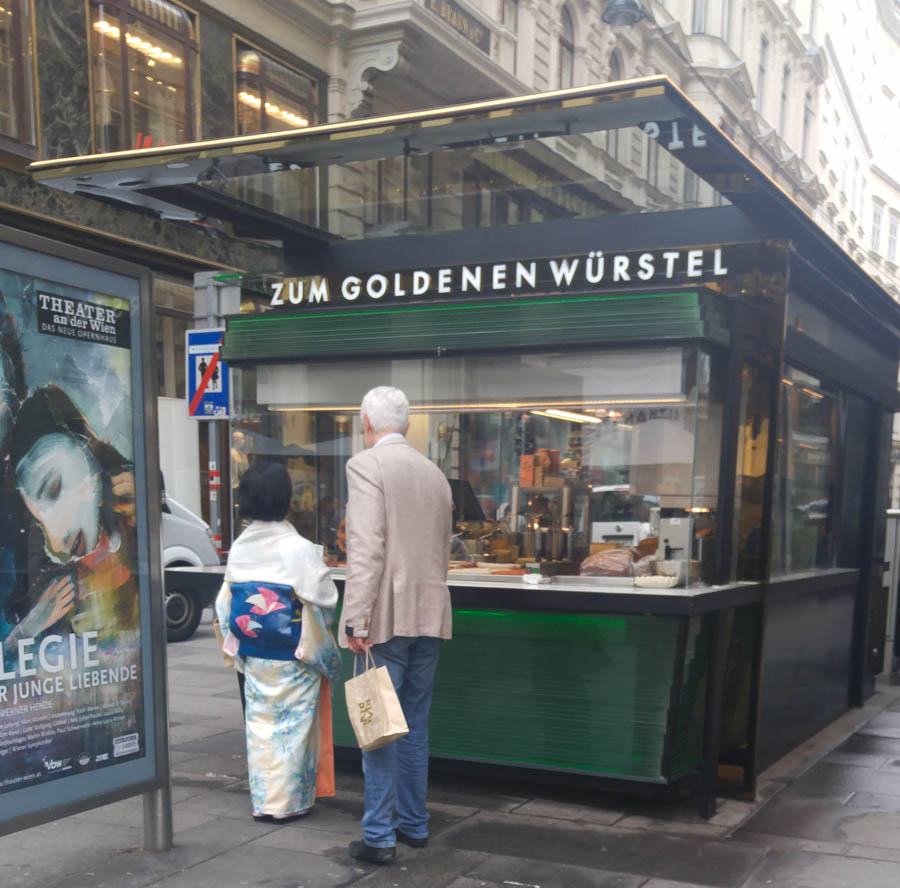
A special fast-food restaurant
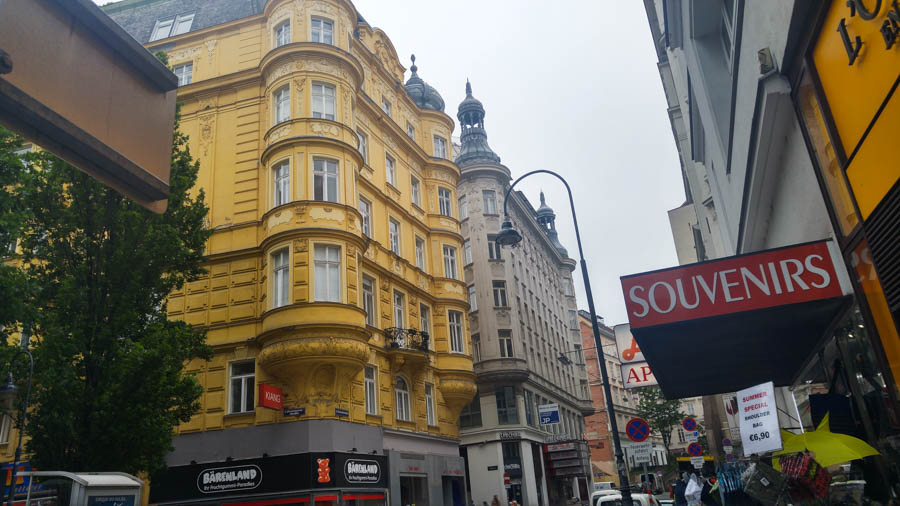
Must love the bright colors

Stand here and a trolley will be by soon!
 Even Vienna has graffiti
Even Vienna has graffiti
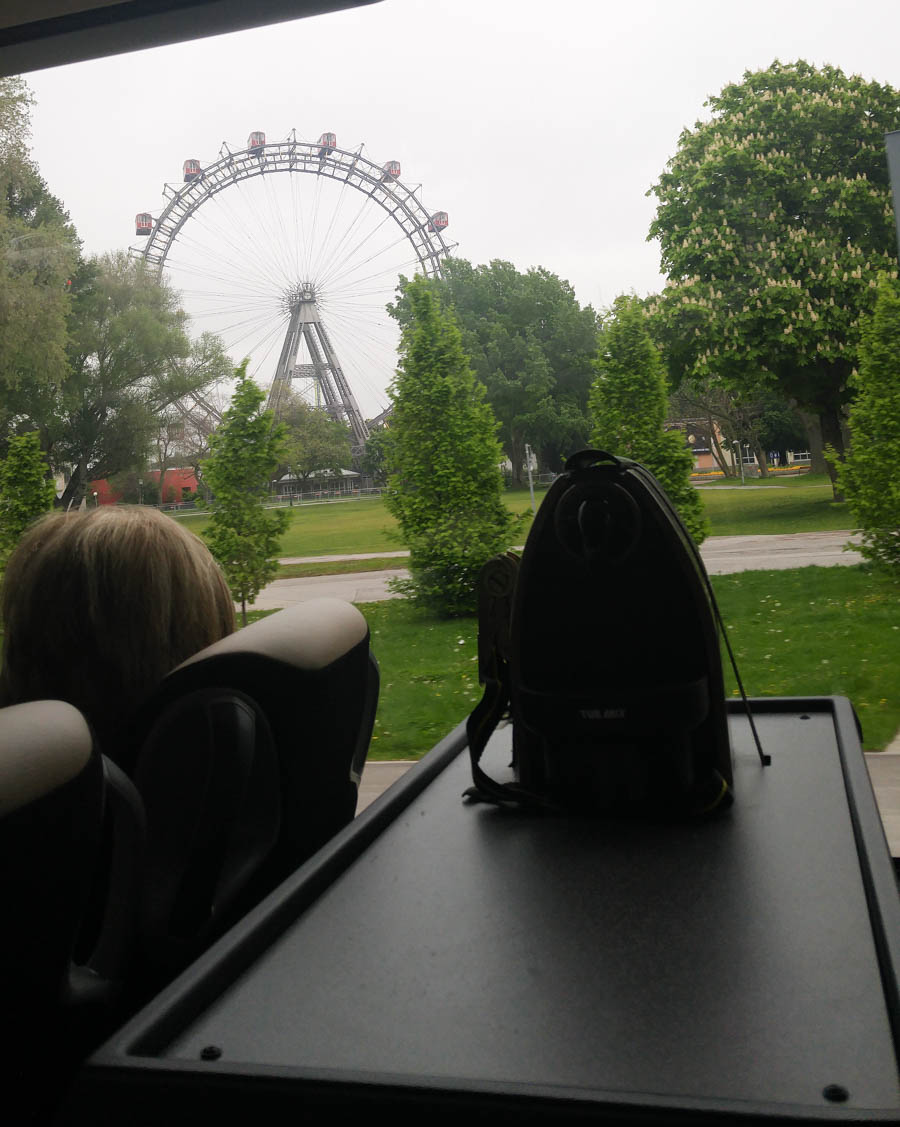
The Wiener Riesenrad in the distance
Did You Know? - The Wiener Riesenrad (German for Vienna Giant Wheel[1]), or Riesenrad, is a 64.75-metre (212 ft) tall Ferris wheel at the entrance of the Prater amusement park in Leopoldstadt, the 2nd district of Austria's capital Vienna.
It is one of Vienna's most popular tourist attractions, and symbolizes the district as well as the city for many people. Constructed in 1897, it was the world's tallest extant Ferris wheel from 1920 until 1985.

Back to the river

St. Francis of Assisi Church
Did You Know? - St. Francis of Assisi Church (German: Kirche zum heiligen Franz von Assisi), also known as the Kaiser Jubilee Church (German: Kaiserjubiläumskirche) and the Mexico Church (German: Mexikokirche), is a Basilica-style Catholic church in Vienna, Austria. Built between 1898 and 1910, it was consecrated in 1913. It is located on the Mexikoplatz in Vienna's Second District, Leopoldstadt, and is administered by the Order of the Holy Trinity.
The construction of the church celebrated the 50th anniversary of the reign of Emperor Franz Joseph I of Austria A competition was held to select the design and was won by architect Victor Luntz. The four-bay, basilica-like brick building was intended as a garrison church; designed in the Rhenish-Romanesque style, its three red-tiled towers are visible several kilometres away.
The church, which is directly situated near the Danube, is now home to the Vienna English Speaking Catholic Community (VESCC) who have held weekly masses at the church since moving there in 2009.
The Mexikoplatz (Mexico Square), formerly known as Erzherzog-Karl-Platz (Archduke-Karl-Square), commemorates the fact that Mexico was the only country outside the Soviet Union to protest against the Anschluss of Austria to Nazi Germany.

The coat of arms adorns the ceiling


Easy to find a snack!

Not a single calorie... If you eat it with chopsticks
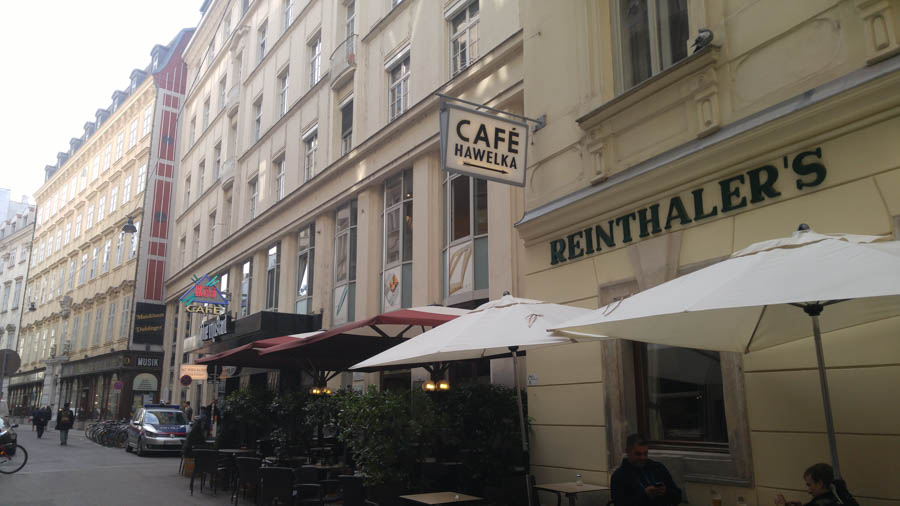

Did You Know? - The Prater (German: [ˈpraːtɐ]) is a large public park in Vienna's 2nd district (Leopoldstadt). The Wurstelprater amusement park, often simply called "Prater", lies in one corner of the Wiener Prater and includes the Wiener Riesenrad Ferris wheel.

Looks like fun!
 One heck of a view
One heck of a view
Did You Know? - The area that makes up the modern Prater was first mentioned in 1162, when Emperor Friedrich I gave the land to a noble family called de Prato. The word "Prater" was first used in 1403, originally referring to a small island in the Danube north of Freudenau, but was gradually extended to mean the neighbouring areas as well. The land changed hands frequently until it was bought by Emperor Maximilian II in 1560 to be a hunting ground. To deal with the problem of poachers, Emperor Rudolf II forbade entry to the Prater. On April 7, 1766, Emperor Joseph II declared the Prater to be free for public enjoyment, and allowed the establishment of coffee-houses and cafés, which led to the beginnings of the Wurstelprater. Throughout this time, hunting continued to take place in the Prater, ending only in 1920.
In 1873, a World Exhibition was held in the Prater, for which a large area of land was set aside, centered on the Rotunda, which burnt down in 1937. This land now houses the Messegelände (exhibition center).
On the grounds of modern-day Kaiserwiese, an attraction called "Venice in Vienna” was established in 1895 by Gabor Steiner. The area included an artificial lagoon to simulate the canals of Venice, Italy.
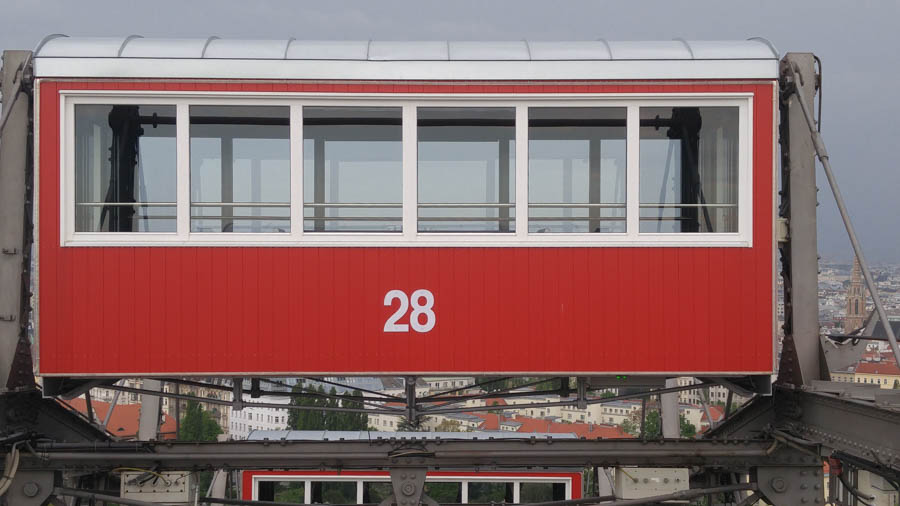
Lots of people can ride at a single time... 28 x 12!
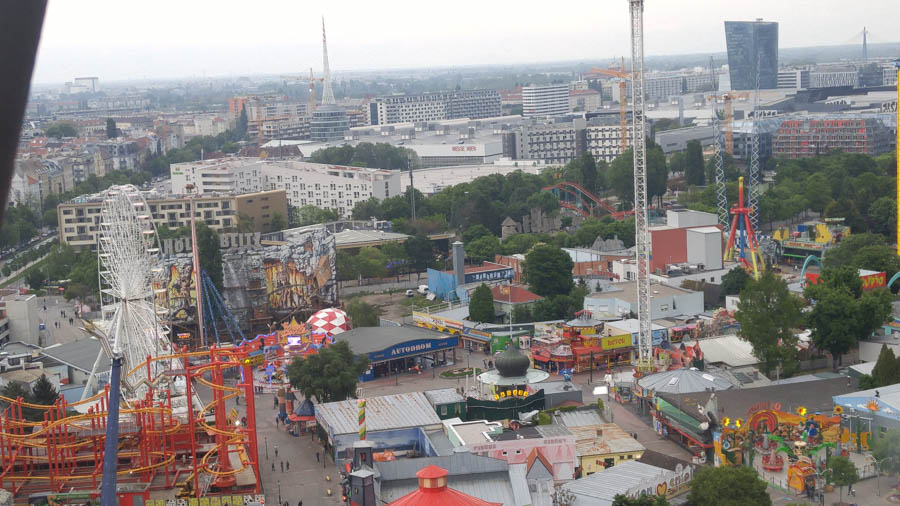
Looks like a USA County Fair

Madam Trusso's Wax Museum
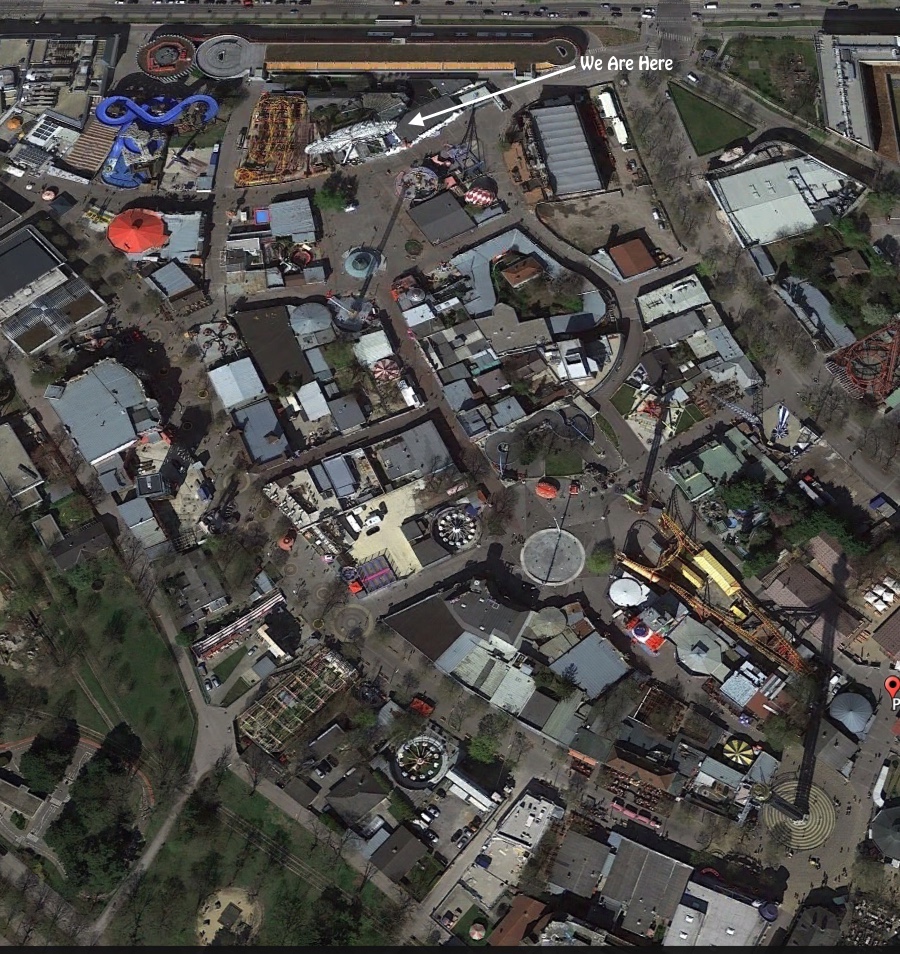

Close to the train station
 Long ways down
Long ways down

Long ways up!

Join us for another day in Vienna (Page Eighteen)
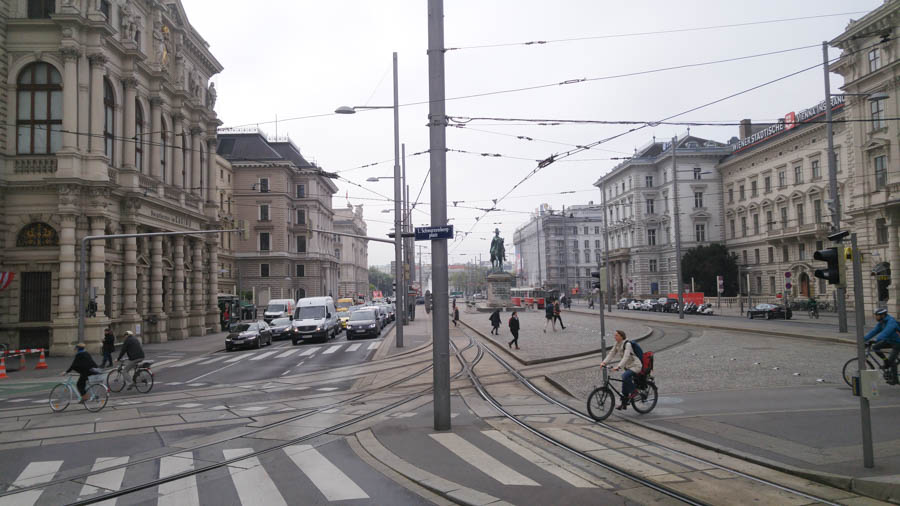 Trolleys are all over Vienna
Trolleys are all over Vienna